- Off-Campus Access
- Find Resources
- Research Support
- Reserve Space
- --> X
- YouTube
- HSHSL Updates RSS Feed
- Connective Issues Newsletter

601 West Lombard Street Baltimore MD 21201-1512 Reference: 410-706-7996 Circulation: 410-706-7928

Project SHARE Curriculum: The Elevator Speech
- About the Curriculum
- About the Project
- Introduction to Health Equity
- Social Determinants of Health
- Health Literacy
- Locating & Evaluating Health Information
- Cultural Competence
- Family Health History
- Preventive Health
- Providers and Doctors' Appointments
- The Importance of Food Labels
- Planning a Nutritious Meal
- Designing Effective Presentations
- Speaking with Impact
The Elevator Speech
- In Your Own Words
- Introduction to Policy
- Introduction to Advocacy
- Designing Effective Posters to Promote a Health Campaign
- Getting Started with Outreach
- National Standards
- Engaging Stakeholders
- Icebreakers/Discussion
- Around Food
- Out of the Classroom
- Videos/Films/Games
- Project SHARE Instructor Survey
- Description & Objectives
- Lesson Plan Documents
Day One - Through the Elevator Speech lesson, students will research and prepare for three potential elevator speeches.
Objectives:
- Evaluate credible sources of information and data to support each elevator speech topic
- Create 1-2 minute elevator speeches for each topic
- Instructor computer and projector
- Student computers/computer classroom
Day Two - Students will have prepared three different 1-2 minute “elevator speeches.” During day two of the Elevator Speech lesson, each student will deliver one of those speeches and the remainder of the class will evaluate the speech using a scoring grid.
- Demonstrate skills in effective, persuasive communication
- Demonstrate skills in obtaining valid information
- Analyze skills in delivering a quality presentation
- Handouts – Scoring Grid, In Your Own Words
- Other: Stopwatch
- Lesson Plan - Elevator Speech Day One
- Handout - Elevator Speech Day One - Research Tips
- Lesson Plan - Elevator Speech Day Two
- Handout - Elevator Speech Day Two - In Your Own Words
- Handout - Elevator Speech Scoring
- Elevator Speech Class FIles One downloadable zip file containing all documents in this lesson.
National Health Education Statistics that Align with the Elevator Speech Lesson
- 3.12.1 Evaluate the validity of health information, products, and services.
- 3.12.2 Use resources from home, school, and community that provide valid health information.
- 4.12.1 Use skills for communicating effectively with family, peers, and others to enhance health.
- 8.12.2 Demonstrate how to influence and support others to make positive health choices.
- 8.12.3 Work cooperatively as an advocate for improving personal, family, and community health.
- 8.12.4 Adapt health messages and communication techniques to a specific target audience.
National Strategies that Align with the SHARE Curriculum
Healthy People 2020 Objectives
AH-2 Increase the proportion of adolescents who participate in extracurricular and/or out-of-school activities.
AH-3.2 Increase the proportion of parents who attend events and activities in which their adolescents participate.
National Partnership for Action
Goal 1 Awareness - Increase awareness of the significance of health disparities, their impact on the nation, and the actions necessary to improve health outcomes for racial, ethnic, and underserved populations.
Strategy 2: Develop and support partnerships among public, nonprofit, and private entities to provide a comprehensive infrastructure to increase awareness, drive action, and ensure accountability in efforts to end health disparities and achieve health equity across the lifespan.
Goal 2: Leadership - Strengthen and broaden leadership for addressing health disparities at all levels.
Strategy 7: Invest in young people to prepare them to be future leaders and practitioners by actively engaging and including them in the planning and execution of health, wellness and safety initiatives.
- << Previous: Speaking with Impact
- Next: In Your Own Words >>
- Last Updated: Jul 1, 2020 3:04 PM
- URL: https://guides.hshsl.umaryland.edu/projectshare
Projects Maintained by the HSHSL
- Alumni & Associates
- Congenital Heart Disease
- Corporate Services
- Embracing mHealth
- Faith Community Nursing
- Project SHARE Curriculum
- Citizen Science: Gearing Up For Discovery (edX)
- UMB Digital Archive
- Weise Gallery
University of Maryland Schools
- School of Dentistry
- School of Graduate Studies
- School of Law
- School of Medicine
- School of Nursing
- School of Pharmacy
- School of Social Work
Connective Issues E-Newsletter
Read Our Latest Issue
Join our subscribers!
Contact Us | Hours | Directions | Privacy Policy | Disclaimers | Supporting the Library | Suggestion Box | HSHSL Building Work Order | Web Accessibility | Diversity Statement
601 W. Lombard Street | Baltimore, Maryland 21201-1512 | 410-706-7995
- Skip to primary navigation
- Skip to main content
- Skip to primary sidebar
Teaching Expertise
- Classroom Ideas
- Teacher’s Life
- Deals & Shopping
- Privacy Policy
20 Unique Elevator Pitch Activities
April 14, 2023 // by Nicole Neumann
An elevator pitch is a brief, persuasive speech that is a way of introducing oneself and sparking interest in one’s creative ideas. The name comes from the amount of time it should take to deliver. If you’re an educator of high school or college-aged students, you can consider using this technique in the classroom! Whether it be for a project your students are working on or preparing them for their future, students will surely benefit from these 20 unique activities.
1. Record Yourself

Out of the five steps in this activity, the most unique step is to record yourself. After students have crafted their pitch, they record themselves and then watch the video back in order to determine what they did well and what they need to work on.
Learn More: Tallo
2. Elevator Pitch Worksheet

This free resource is the perfect way to help your students understand what an elevator pitch is. It lists the various components of an elevator speech and even provides a few example pitches. Use this when introducing the concept to your students.
Learn More: California State University San Bernardino
3. Make it a Workshop

Instead of one lesson, consider making a workshop out of elevator pitches. Elevator pitches give your students so much to benefit from yet they can be rather difficult to get started with. Therefore, don’t rush through the content and allow your students to work on this over a longer period.
Learn More: National Association of Colleges and Employers
4. Flipped Classroom Model

Consider having your students brainstorm their elevator pitches at home prior to the lesson. Then, during class, students can share their pitches with each other and ask for feedback. A flipped classroom model like this increases student engagement.
Learn More: Utrecht University
5. Use Flipgrid
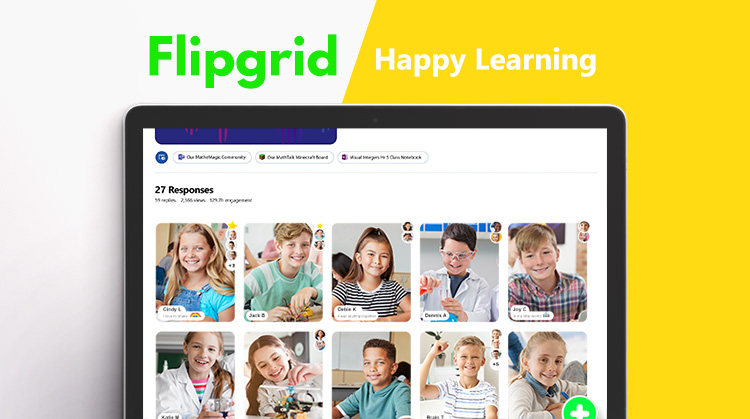
After students craft their elevator pitch, they can use the free, video-based tool to record themselves giving their speech. Afterward, Flipgrid allows students to watch and comment on each others’ videos to provide feedback.
Learn More: You Science
6. Prepare Multiple Pitches

In this activity, your students will create three different speeches. It’s beneficial to have multiple pitches planned for unique scenarios. After all, no situation in life is ever going to be the same.
Learn More: University of Maryland
7. Team Ice Breaker Activity
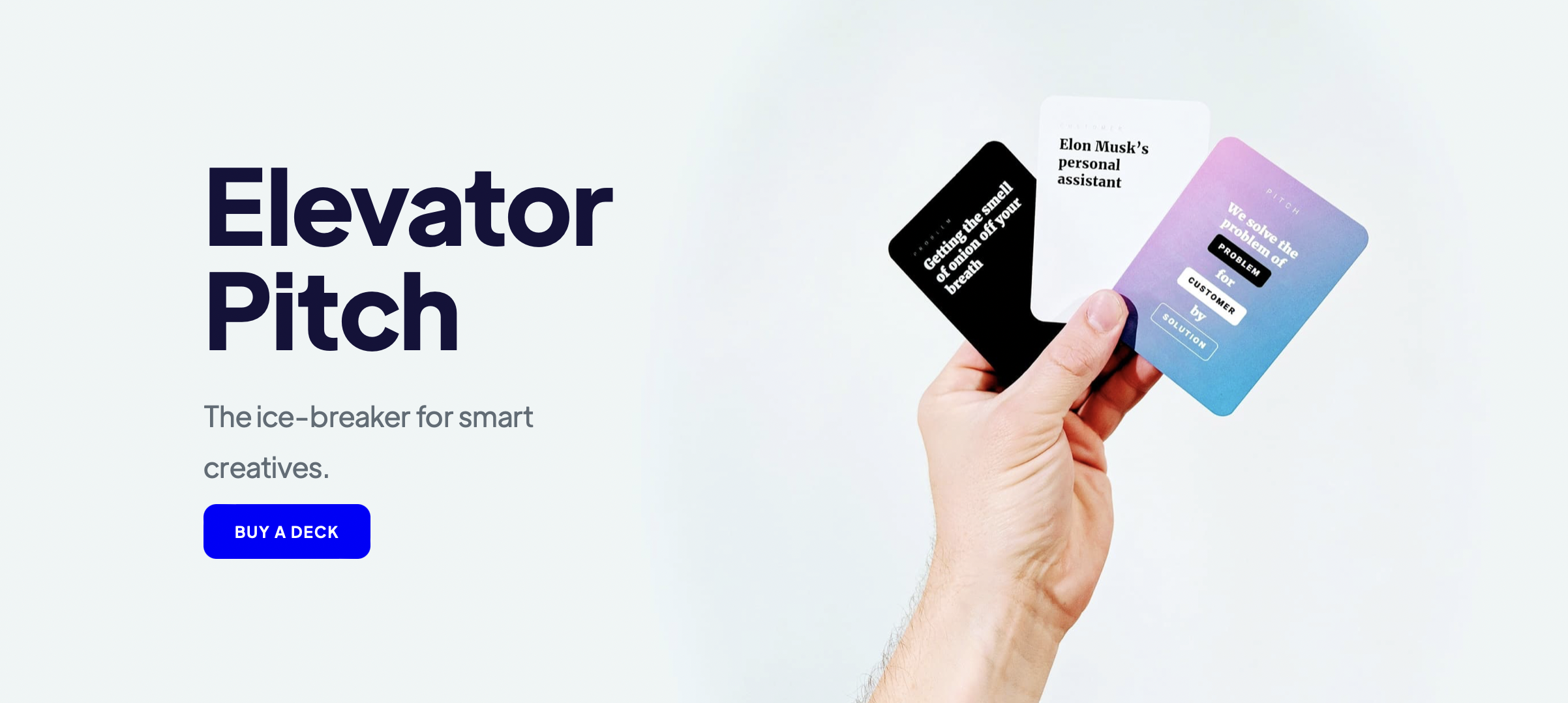
Instead of having your students work individually and create separate elevator pitches, consider following this model and allowing your students to work in teams to create and give an elevator pitch. Teamwork can help students overcome their fears of public speaking.
Learn More: Skills of the Modern Age
8. Use an Elevator Pitch to Share Your Research
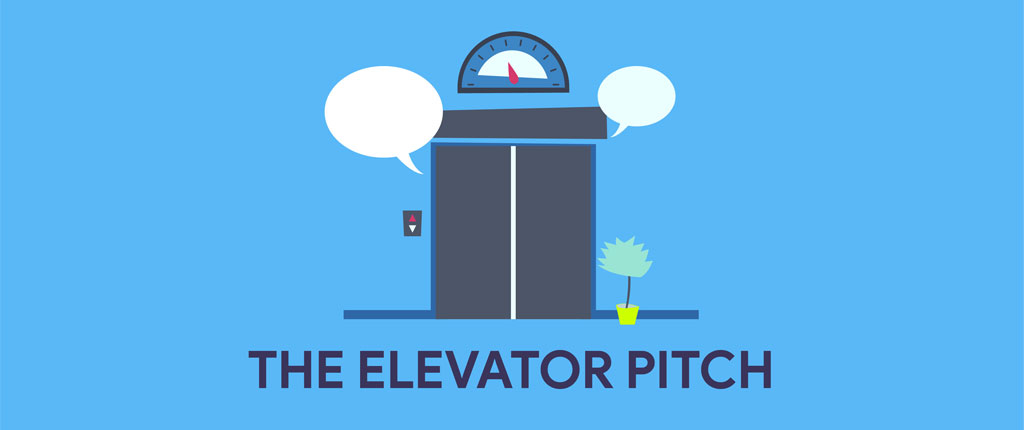
Research activities are something that almost every student does at one point or another in their academic career. They can make your student stand out for a job or college opportunity. Students should create an elevator pitch based on the research they have conducted to hopefully share in the future.
Learn More: Teach Psych Science
9. Use a Hook
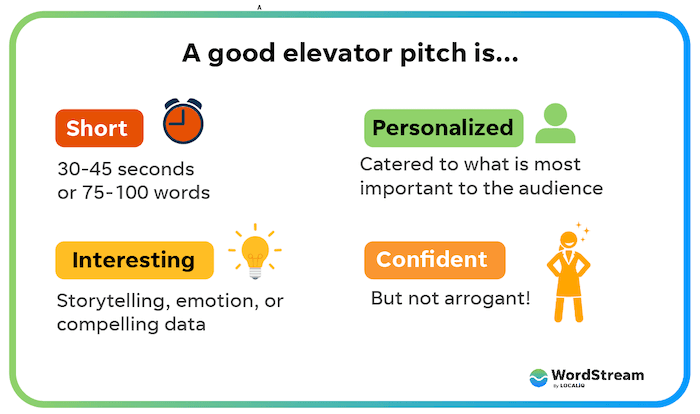
A good skill for students to learn is to establish a speech with a hook. If they resonate with their audience, they are more likely to be remembered. Using a hook will enable them to aptly portray their message to a given audience and captivate their interest.
Learn More: Word Stream
10. Add Captivating Details
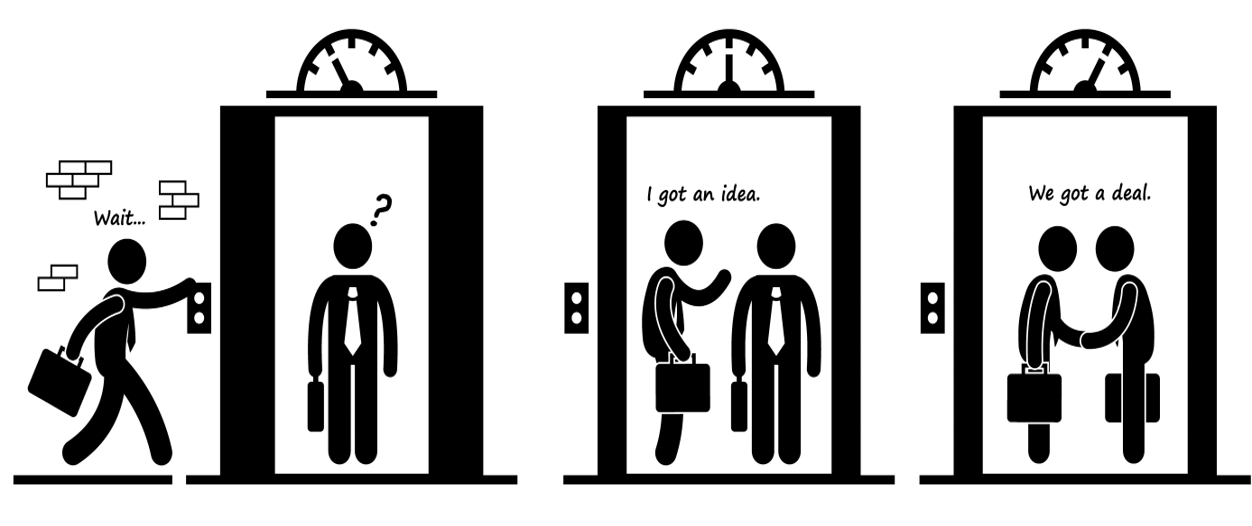
Continuing on with the previous example, it’s very important for students to be remembered when they give their elevator speeches. In this activity, students will learn that by adding captivating details such as a quick story, they are more likely to be remembered.
Learn More: Story Doc
11. Shark Tank Project
The show, “Shark Tank” offers an opportunity where people to pitch their ideas in a short speech. After watching some examples from the show, have your students work on this Shark Tank Presentation.
Learn More: Erin Bunton
12. Give Multiple Examples

Since each of your students is different, so are their pitches. Give your students options to create different pitches by providing them with this resource that includes 13 different examples.
13. Fill in the Blank Template

This resource will help students create an elevator pitch by filling in the blanks of a mad-libs-type activity. It’s perfect for when you have less time in the classroom or if your students need more support.
Learn More: Creative Business and Marketing
14. Watch a How To Video
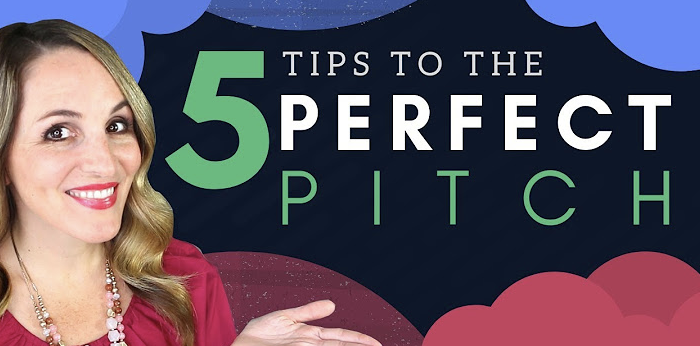
This video by Professor Heather Austin offers five tips to create your own perfect elevator pitch. Showing a video in class is an engaging and innovative way to learn about an elevator pitch.
Learn More: Professor Heather Austin
15. Pitch to a CEO

In this lesson plan, students will produce a video of themselves pitching to a CEO of a company. Who knows, this could make its way to a real-life CEO!
Learn More: Adobe
16. Incorporate the Past, Present, and Future

This resource explains the importance of including present, past, and future statements in a pitch. Students should make it known where they are now, where have they been, and where are they going.
Learn More: St. Norbert College
17. Watch the “Best Elevator Pitch” of the World
This video will give your students an idea of what a good sales pitch looks like. Students are often very engaged by videos so this could be a great way to introduce elevator pitches.
Learn More: Youtube
18. Sell Yourself

This activity has your students introduce themselves to the class and give you an idea of what their pitching skills are like. This could be useful as an icebreaker activity as well.
Learn More: Let’s Get Down to Business
19. Set Up Student Appointments
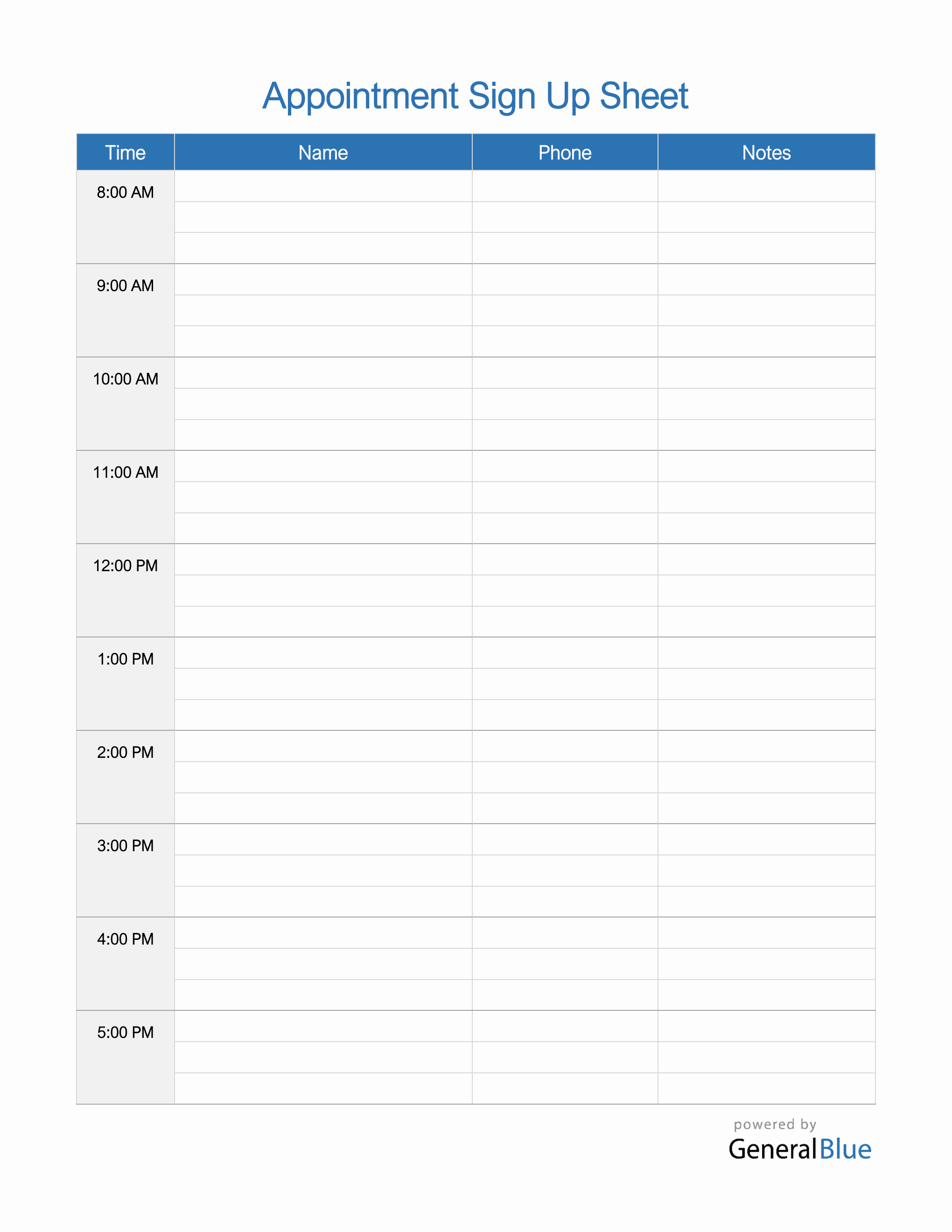
In this activity, instead of students performing their elevator pitches in front of the class, set up 10-minute appointments with just you and the student so they can feel less nervous and you can have more time to give feedback.
Learn More: University of Sussex
20. Marketing a Food Truck
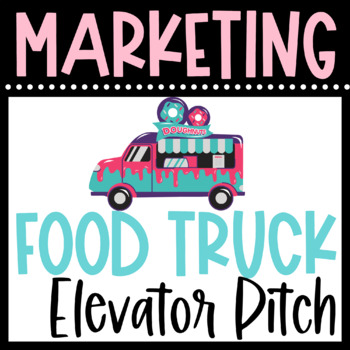
This super fun activity is a great way to get students thinking about branding and marketing. Students can present their pitches to each other in a fun “pitch-off”!
Learn More: The Pretty Little Classroom
Elevator Pitch ESL Lesson Plan [Free PDF]
Table of Contents
Introduction
The Elevator Pitch ESL Lesson Plan is designed to help students develop the essential language skills needed to deliver a concise and persuasive speech about themselves or a specific topic within a short time frame, similar to an elevator ride. This lesson plan is crucial as it equips students with the ability to communicate effectively in high-pressure situations, such as job interviews or networking events. Mastering the art of delivering an elevator pitch not only enhances English language proficiency but also builds confidence and professionalism, making it a vital skill for ESL learners in their personal and professional development.
Vocabulary Building
Contextual Usage
– Example: The entrepreneur delivered her elevator pitch with persuasive language that captivated potential investors.
ESL Warm-up Activity
To set the tone for the Elevator Pitch ESL Lesson Plan, begin with an engaging warm-up activity. Provide each student with a random topic or item, such as “Your Favorite Hobby” or “Smartphones,” and ask them to prepare a 30-second elevator pitch about the given topic. This activity will prompt students to think on their feet and use language elements relevant to persuasive communication, such as introducing themselves clearly and succinctly while expressing their passion for the topic. Encourage participation from all students to create a dynamic and interactive learning environment.
Main ESL Lesson Activities
Vocabulary activity: elevator pitch brainstorm, roleplay: elevator pitch practice.
Pair up the students and assign roles as the speaker and listener. Each student will take turns delivering their prepared elevator pitch while the listener provides constructive feedback on elements like clarity, persuasiveness, and language proficiency. Rotate roles to ensure all students have a chance to practice both speaking and giving feedback.
Listening: Analyzing Elevator Pitches
Reading & writing: crafting your elevator pitch, esl homework assignment.
For the homework assignment, students are tasked with creating their own elevator pitch on a topic of their choice. They should apply the vocabulary, persuasive language techniques, and structure learned in class to craft a compelling 30-60 second pitch. Encourage students to practice delivering their pitch multiple times and seek feedback from friends or family. Additionally, they can research and watch elevator pitches in various professional contexts to gain more insight into effective communication strategies.
Key Points Summary
Reflective application, why this topic is great for esl learning.
The Elevator Pitch ESL Lesson Plan is an excellent topic for ESL learning because it offers several benefits to students.
Develops Language Fluency
Enhances communication skills, builds confidence.
Preparing and presenting an elevator pitch allows students to build confidence in public speaking, self-presentation, and networking settings. As they develop their language skills and become more comfortable with expressing themselves succinctly, their overall confidence in using English improves.
Promotes Critical Thinking
Creating an engaging elevator pitch requires students to analyze audience needs, identify key messages, structure content logically, and choose persuasive language effectively. Through this process of critical thinking and analysis, students sharpen their problem-solving skills while developing persuasive arguments.
Incorporating the Elevator Pitch ESL Lesson Plan into the curriculum provides a practical platform for ESL learners where they can apply language skills in authentic contexts while enhancing overall proficiency in English communication.
Post navigation

My Hometown ESL Lesson Plan [Free PDF]

To Kill a Mockingbird ESL Lesson Plan [Free PDF]
- Crimson Careers
- For Employers
- Harvard College
- Harvard Kenneth C. Griffin Graduate School of Arts & Sciences
- Harvard Extension School
- Premed / Pre-Health
- Families & Supporters
- Faculty & Staff
- Prospective Students
- First Generation / Low Income
- International Students
- Students of Color
- Students with Disabilities
- Undocumented Students
- Varsity Athletes
- Explore Interests & Make Career Decisions
- Create a Resume/CV or Cover Letter
- Expand Your Network
- Engage with Employers
- Search for a Job
- Find an Internship
- January Experiences (College)
- Find & Apply for Summer Opportunities Funding
- Prepare for an Interview
- Negotiate an Offer
- Apply to Graduate or Professional School
- Access Resources
- AI for Professional Development and Exploration
- Arts & Entertainment
- Business & Entrepreneurship
- Climate, Sustainability, Environment, Energy
- Government, Int’l Relations, Education, Law, Nonprofits
- Life Sciences & Health
- Technology & Engineering
- Still Exploring
- Talk to an Advisor
How to Give a Great Elevator Pitch (With Examples)
- Share This: Share How to Give a Great Elevator Pitch (With Examples) on Facebook Share How to Give a Great Elevator Pitch (With Examples) on LinkedIn Share How to Give a Great Elevator Pitch (With Examples) on X
How to Give a Great Elevator Pitch (With Examples) was originally published on Forage .

Though people are complex and so much more than just their jobs, in a new social situation you’re often asked, “So, what do you do?” or “What are you majoring in?” While you probably have a stock answer ready to go (I’m in sales; I’m majoring in English), the person asking may be able to help you achieve your career goals — but they won’t know unless you’ve got an elevator pitch ready to go.
An elevator pitch is an enticing and interesting three or four-sentence summary of you. But you do more than talk about yourself. Your elevator pitch gets the listener interested in what you’re capable of.
In this guide, you’ll learn:
What Is an Elevator Pitch?
How to write an elevator pitch, elevator pitch examples, elevator pitch bonus tips.
Mike Gardon of CareerCloud sums up elevator pitches like this: “When meeting someone for the first time, we all get asked what we do, right? Well, an elevator pitch is how you answer that question.”
At its core, an elevator pitch is a brief synopsis of who you are and what you do (or are trying to do). It’s named so because of the idea that you’re in an elevator with the one person who can make your career dreams come true. You’ve got the length of that elevator ride (approximately 30 seconds) to convince that person to keep listening to you.
Why You Need an Elevator Pitch (and When You’ll Use It)
In many respects, an elevator pitch is all about you. And though it may seem strange — uncomfortable even — to talk about yourself, a well-designed elevator pitch starts with you and ends with the listener.
Gardon explains, “The elevator pitch is designed to engage the person with whom you are communicating, and get them to take some next action. Think about it like this: if you were writing an email, the elevator pitch would be the subject line plus the next couple of lines that are shown in an inbox. The purpose is to get the recipient to open the email.”
In the case of your elevator pitch, you’re attempting to spark a longer conversation (or later meeting) with someone who could potentially help you professionally.
Showcase new skills
Build the confidence and practical skills that employers are looking for with Forage virtual work experiences.
Sign up for free
Your elevator pitch comes in handy when you’re looking for a job. But you’ll also use various versions of your elevator pitch in situations like:
- Networking events
- Prospecting for new sales and clients
- When you’re interviewing and asked, “Tell me about yourself.”
- As the “about me” on LinkedIn, Twitter, or other social media page
- In the summary of qualifications on your resume
How Long Should an Elevator Pitch Be?
While elevator ride times vary, the general rule of thumb is that an elevator pitch is no longer than 30 seconds, which means your pitch needs to be concise.
So, you can’t include every accomplishment from your last three jobs, just the top most recent ones. As you’re honing your pitch, write it down and limit yourself to four sentences. This will help you focus on your top highlights.
In general, an elevator pitch includes four essential elements: who you are, what you do, what’s unique about you, and what your “ask” is. Though the “meat” of your pitch likely doesn’t change often, you should prepare multiple elevator pitches that you can tailor to your situation.
For example, if you’re a student, the pitch you use at a career fair may not be the same one you use at a networking event. Likewise, if you’re changing careers, you may need to switch up what your “ask” is depending on who you talk to.
Gardon offers an example. “I wear so many different hats and am involved in different businesses. So, if I want someone to be a guest on my podcast, I might tell them how we’ve done over 400 episodes, instead of telling them that I’m a former derivatives trader.”
Also, while the below elements are crucial, they can go in almost any order. While a good elevator pitch usually begins with your name, you may find that listing your skills before your accomplishments is better for your pitch.
Part 1: Who Are You?
Your elevator pitch starts with your name, of course, but also consider throwing in a “hook” that gives the person you’re speaking with an opening to ask you questions. Here are some examples:
“I’m [your name], a recent graduate of [university] with a degree in [your degree].”
“My name is [your name] and I’m a junior at [university] majoring in [your major].”
“I’m [your name] and while I’m currently in product development, I’ve decided I want to change gears and go into graphic design.”
Part 2: What Do You Do?
The second part of your elevator pitch explains what you do. However, you shouldn’t limit yourself to a job title. This is the place to mention one outstanding accomplishment from your job, internship, or even a class that will wow your listener.
Like all parts of your elevator speech, this needs to be brief, but it should also be detailed and help the listener get an idea of what you’re capable of:
“During my marketing internship at [name of company], I grew social media engagement by 43%, which resulted in an uptick in newsletter sign-ups year over year.”
“Our business is small, but that lets us have more personal interaction, which has helped us keep a small but loyal and profitable client base for 15 years.”
“After learning about the stock market, I wanted to test what I learned as well as my skills, so I created a mock portfolio that’s realized a 24% gain over the last year.”
Part 3: What’s Unique About You?
The next section of your elevator pitch includes something unique about you. While this can include specific skills, you can also trace your career path or accomplishments to illustrate how you use your skills.
Because you only have 30 seconds, you might be tempted to list your skills or accomplishments like a grocery list. But try to link them to an outcome or something you can do.
“I enjoy analyzing data and using the results to plan my content calendar, including social media posts.”
“I worked on my college newspaper, starting on the sports beat, eventually moving my way up to chief editor.”
The first example mentions one skill (data analysis ) and two outcomes (planning the content calendar and social media posts). The second example doesn’t mention any skills but illustrates the speaker’s career path (sports beat to chief editor), demonstrating an increase in skills and responsibilities.
>>>>>> Ready to level-up your data analysis skills? Try the Data & Analytics Virtual Work Experience
Part 4: Call to Action (or What’s Your Ask?)
The final part of your elevator pitch includes a call to action. Or, more specifically, what are you asking for?
Much like networking, you may not want to blurt out “a job!” even if that’s your desired outcome. This section is what you hope will happen, which could be a job, internship, or just a new networking connection.
“I would love to speak to you about being a potential mentor, if you have time.”
“I’d like to follow up with you about how I can get involved in and conduct summer research.”
“Can you tell me how you decided on [this] career?”
Each of these invites the listener to continue engaging with you either right now or in the future.
Optional Part 5: Something Memorable
Finally, depending on the situation, you might want to include something memorable in your pitch. This is situation-dependent and only something you should do if you’re comfortable.
For example, the pitch on Gardon’s LinkedIn profile says, “Earned the Title ‘World Champion Funniest Person In The World (to my kids)’ 10 years running.”
Of course, not everyone can be the “Funniest Person in the World,” but your memorable moment could be your love of science fiction, who your favorite author is, or the fact that you just adopted a cat.
Here’s what all the elements look like when you put them together:
“I’m David, a rising senior at XYZ University and an education major. I spent last year student teaching at my old high school, and it was quite the experience being on the other side. I’m graduating in the spring and am looking to teach high school biology.”
“I’m Ella, and I’m currently an individual contributor at XYZ company running the social media accounts. I use Google Analytics to analyze and improve content performance, and my personal TikTok has XXX followers. I’m looking to move to a leadership role at a mid to large-size company where I can mentor others.”
“I’m Mike and I’m a sophomore at XYZ university. When I was a kid, I really wanted to communicate with animals, which is partly why I’m majoring in zoology. I’m not sure what career is best suited for me. Can you tell me how you ended up in yours?”
Once you’ve written (and rewritten) your elevator pitch, you’re almost ready to try it out. Before you do, though, ensure your delivery is memorable — for the right reasons!
- Practice. Practice makes perfect, of course. And while you don’t want to sound too rehearsed, you also don’t want to trip over your pitch or start rambling. Practice in front of a mirror, with friends or family, or record yourself to make sure you’re getting it right.
- Time yourself. Thirty seconds can feel like forever or fly right by. Time yourself to make sure your pitch isn’t too long or too short, and adjust as necessary.
- Use your “excited” voice. While you’ll want to use your “inside voice,” vary your tone. When you give a rehearsed speech, it should be polished but not robotic. Try to bring some excitement to your voice as you speak.
- Speak slowly. You may want to cram as much as possible into your 30 seconds, but that could result in you speaking too quickly to try to get it all in, making it tough for the listener to understand you. As hard as it might be, stick to one or two main points.
- Maintain eye contact. While you don’t want to stare at the listener the whole time, you don’t want to stare at the floor either. Maintain the level of eye contact that feels normal and natural to you, and break eye contact when appropriate.
Make Your Pitch
An elevator pitch is useful in all sorts of professional (and even personal!) situations. By taking stock of what you do and what you want to do, you’ll find the perfect elements to include in yours and impress the next person you pitch it to.
Want more insights into creating the perfect pitch? Check out Ashurst’s Building Your Personal Brand Virtual Experience Program .
Image credit: Canva
The post How to Give a Great Elevator Pitch (With Examples) appeared first on Forage .

Elevator pitch
Level B1 / B2
Topic Business ESL lesson plans
Type Business English
Lesson plan overview
This Business English lesson will help students craft an elevator pitch. It is useful for students who are looking for a job, or to change jobs, entrepreneurs, salespeople, and freelancers. Other lessons you might find interesting are “ Small talk ”, “ Communication styles: assertive vs aggressive ”, “ Dress for success “, “ Phrasal verbs: communication ”, and “ Phrasal verbs: convincing and persuading ”. The lesson starts with a few conversation questions about introducing yourself in business contexts and first impressions. Reading: Students read 4 different elevator pitches and then come up with their own definitions of what an elevator pitch is. Then they match the pitches to the role the person has ( an entrepreneur, a job seeker, a non-profit leader, a freelancer ). Speaking: Students discuss 5 questions about elevator pitches. Vocabulary: Students look at adjectives that are commonly used to describe effective and ineffective pitches, as well as how people should deliver their pitch (e.g. persuasive, boring, compelling, generic, concise, confusing, engaging, memorable, lengthy, disorganized ). Then they practice the adjectives, discussing 3 talking points given. After that students learn 5 collocations with the word “pitch” ( craft a pitch, tailor a pitch, rehearse a pitch, nail a pitch ), and complete a gap-fill practice activity. Listening: Students watch a video called “ Elevator pitch example – How to create a personal elevator pitch ”, and fill a table with information from the video. Functional language : Students learn expressions to help them craft their elevator pitch, related to talking about your passion, mission and vision, accomplishments, target audience, and including a call to action. Writing and speaking : Students are given a template in order to craft their elevator pitch After completing the task, they practice delivering their pitch in pairs or small groups. Finally, students look at 3 ways to practice your elevator pitch, and discuss which one they like most. To review the target vocabulary, and include more speaking practice, you can use the conversation cards.
Unlock these resources with one of our subscription plans
Teacher’s lesson plan
Student’s worksheet
Student’s interactive PDF
Conversation cards PDF

Pre-class activities
All video-based ESL lesson plans include online pre-class activities, which are FREE and can be completed without registration. Perfect for teachers who wish to embrace the blended learning approach. By providing students with resources and engagement opportunities before the actual class session, educators can foster active participation, enhance comprehension, and optimise in-class discussions.
The pre-class activities are optional : if you choose not to assign them, or your students don’t complete them, it will not disturb the flow of the class. You can find and review the pre-class activities for this lesson plan here:
To send the pre-class activities to your students, copy the link below.

In-class activities
Get Premium to unlock
Get Premium Plus to unlock

Additional resources
Each video-based lesson plan includes links to additional resources (videos and articles), which are FREE can be found online (in the pre-class activities page. These links aim to extend the learning experience, enabling students to connect classroom knowledge with real-world applications.
Not sure yet?
Try one of our FREE lessons plans
Login using email and password. If you forgot your passowrd reset it here
Forgot your password?
Not a member? Sign up now
Share this lesson plan with someone who will find it useful

- READY-TO-TEACH
- ESL Lesson Plans for Adults
Elevator Speech
Lesson Overview
Lesson objectives.
Listening: Learners will enhance their listening skills by engaging with a video that involves a sales pitch, helping them understand how "can" and "could" are used in spoken English.
Speaking: Students will simulate conversations that involve pitching or selling ideas. They will use modal verbs like "can" and "could" to improve their ability to communicate effectively in professional settings.
Vocabulary: The lesson will focus on phrases commonly used in marketing and persuasion, such as "pitch," "market," and "persuasive," enhancing their ability to discuss and understand sales strategies.
Cultural Awareness: Students will explore different sales pitch ideas and discuss how cultural factors can influence the effectiveness of a sales pitch.
Homework: Students will complete exercises that include choosing the correct words to complete sentences, matching sentences to their meanings, and selecting the best discourse marker for given sentences.
Video Transcript
Vocabulary and pronunciation.

Climate Change

Is This Food Really Healthy?

10 Habits of Rich People

Replacing Bad Habits

Ageism in the Workplace

Success at Work

Why Conspiracy Theories Spread

Coping with Stress

Selfie Awareness

Engagement Photos

Your Community

Body Language

The Fifties

Interview Tips

Accidental Inventions

Ghost Story

Growing Your Own Food

Is Networking Important?

Resume Language

Changing Your DNA

Hacks for Cravings

Nontraditional Education

Addictive Social Media

The Felt Supermarket

Think on Your Feet!

Hard vs. Soft Skills

911, What’s Your Emergency?

High School Graduation

Stress Less

Does It Bother You?

The Future of Jobs

Be Creative!

Are Perks Enough?

Digital Marketing

Sell Me This Pen

Content Matters

How to Get a Green Card?

Be the Idiot in the Room

Ask Dr. Google

Boss or Leader?

Cheap or Frugal?

To Save or to Invest?

Being a Team Leader

Are You a Multitasker?

Corporate Culture

Couples at Work

Overcoming Obstacles

Autocratic Leaders

Types of Advertising

Recruitment Strategies

How to Stay Motivated

Sleep Benefits

Negotiating a Salary

A Vitamin a Day

Brand Identity

Understanding Social Behaviors

Lying on Your Resume

Finding a Job with LinkedIn

What Is Middle Class?

Job Interview Fails

Diet Cheat Days

Marketing Strategies

Coffee Addiction

Choosing a Career Path

Cost Cutting

Understanding Nonverbal Communication

The Challenges of Owning a Business

Personal Brand

Customer Service - Resolving Complaints

Job Satisfaction

What Are the Signs You May Get Fired


Stress and Burnout
Add to favorites, welcome log in.

My Speech Class
Public Speaking Tips & Speech Topics
Elevator Speech [Outline + 13 Examples]

Jim Peterson has over 20 years experience on speech writing. He wrote over 300 free speech topic ideas and how-to guides for any kind of public speaking and speech writing assignments at My Speech Class.
Capturing your background, skills, and objectives into a short and clever elevator speech can be difficult. How do you know what to keep and what to leave out? How do you make an impression in such a short time?
Standing out with your elevator speech doesn’t have to be complicated. With a little practice, you’ll gain confidence in introducing yourself at a job interview, career fair, and, of course, on an elevator ride! Here’s a quick guide to help you craft the perfect pitch along with several elevator speech examples.
In this article:
Tips for Creating a Good Elevator Speech
A sample elevator speech outline, checklist for fine-tuning, elevator speech examples.

The elements that make up a great elevator speech outline are pretty straightforward. You need to describe who you are, what you do, and what your goal is. While the elevator speech template stays the same whether you’re speaking with a potential employer or a sales prospect, you might add other elements to match your unique situation.
Here are a few tips for crafting your personal elevator pitch:
Can We Write Your Speech?
Get your audience blown away with help from a professional speechwriter. Free proofreading and copy-editing included.
- Keep it 30 to 60 seconds long.
- Use persuasive speech to spark your listener’s interest.
- Showcase your qualifications or skills.
- For a sales pitch, try starting with an open-ended question.
- Describe who you help and what problem you aim to help them solve.
- Be ready to customize your speech to fit your target audience.
Whether you’re a business owner preparing for a networking event or a job seeker attending a job fair, you can benefit from perfecting a succinct and effective elevator pitch. A go-to elevator speech comes in handy when you’re introducing yourself to new people in general. Have a business card on hand and ready to deliver as well.
Your elevator speech can also provide the right content for social media bios or a resume objective statement. This statement represents your personal brand, so keep it consistent across all social media channels.
Be sure to practice your elevator statement over and over so that you’re able to deliver it naturally, even in a moment’s notice. If you’re stumped for ideas, draw from the elevator speech examples listed below.
This model suggestion plan assists you to avoid creating a sales pitch. It must be from your mouth and supporting body language gestures, and about your skills and abilities. Use each idea to write one short powerful sentence.
The 10 speech topics I will explicate right now in the next paragraphs are primers to write a carefully planned and prepared presentation that grabs attention and says a lot in a few words.
Remember: tweak till it fits your personality and decisive nature.
ABOUT YOU 1. Smile to your counterpart, and open with a statement or question that grabs attention: a hook that prompt your listener to ask questions. 2. Tell who you are: describe you and your company. 3. Tell what you do and show enthusiasm.
WHAT DO YOU OFFER 4. Tell what problems have solved or contributions you have made. 5. Offer a vivid example. 6. Tell why you are interested in your listener.
WHAT ARE THE BENEFITS 7. Tell what very special service, product or solutions you can offer him or her. 8. What are the advantages of working with you? In what do you differ from competative companies?
HOW DO YOU DO IT 9. Give a concrete example or tell a short story, show your uniqueness and provide illustrations on how you work.
CALL FOR ACTION 10. What is the most wanted response? Do you want a business card, a referral or an corporate appointment for a presentation after your elevator speech ?
OTHER BUSINESS QUESTIONS
These are other points, questions and business subjects you could ask:
- Who is your target?
- How large is your market volume?
- How do you make profits?
- What are the background, major milestones and achievements of your team?
- Who are your competitors, how do they solve a problem? What is your strength and advantage compared to them? What is your Unique Selling Proposition?
- Are there special patents or technology? Do you have a special approach in client management? And so on.
STEP 1: First write down all that comes up in your mind.
STEP 2: Then cut the jargon and details. Make strong short and powerful sentences. Eliminate unnecessary words.
STEP 3: Connect phrases to each other. Your elevator speech address has to flow natural and smoothly. Do not rush, keep eye contact all the time and work steady to the grande finale: the call to action.
STEP 4: Memorize key points and practice out loud – test it with a close relative in the safe environment of your home.
STEP 5: Have you really answered the key question of your listener: What’s In It For Me?
STEP 6: Create different versions for different business situations of your elevator speech. Note them on professional business cards:
Perfect your own elevator presentation by learning from others. Here are a few effective elevator pitch examples to help you craft your own:
1. Job Seeker Elevator Pitch Example
https://www.youtube.com/watch?v=JH0Thez9gvA
You run into all kinds of people at the elevator, even a hiring manager. This sample elevator speech is a good example for those looking for a job interview. It shows how you can highlight your skills and experience even when you’re caught off guard. Notice how she also has a business card ready?
“I’m excited to hear back because the position helps me to use my brand management and social media skills…”
2. Recent Graduate Great Elevator Pitch
This is an excellent example for those who recently graduated with a bachelor degree in business. Notice that she states exactly what she’s looking for – an internship or job opportunity. In just 41 seconds, she states her experience, skills, and some good details about her personality that make her the perfect job candidate.
“I hope to incorporate my business knowledge into consumer trend analysis and strengthening relationships among consumers…”
3. College Student Personal Elevator Speech
This college freshman opens with her interest in the company. She states her major and reflects on high school experiences, also sharing relevant awards she has won for her skills.
“I’ve gotten awards for my leadership skills and I’m very involved with my college…”
4. Personal Brand Elevator Pitch Template
This college graduate pitches his personal brand through stating the skills he acquired in his education, the type of job he is looking for, and why he wants to work in that type of job. He offers a good mix of talking about his own experience while also focusing on how he’ll help clients. He ends his speech with the call to action of directing his audience to his website.
“I strive to lead a team on various projects one day.”
5. Personal Brand Pitch with a Personal Touch
https://www.youtube.com/watch?v=m_paOrg5Zpg
Video pitches are becoming increasingly popular for those looking to connect with brands online. This college student’s personal brand sales pitch stands out because it opens and closes with inspirational music. She explains her personal promise and future plans to receive her master degree.
“I promise to always bring positivity to the table and to remain hard working and dedicated no matter what the task.”
6. Business Plan Effective Elevator Speech
This example is perfect for a small business owner looking to pitch a product. The speaker opens with a compelling situation that appeals to his target market, offers his solution and details the features and benefits, announces his promise, and states his objective – all in 51 seconds.
“Don’t let frost bite your buns. Get the hot seat!”
7. Small Business Elevator Speech Sample
Opening with an interesting fact of how much Americans spend on fishing each year, the speaker follows up with an open-ended question to immediately grab audience attention from her target market. This is a great example of a sales pitch to investors, as the speaker outlines her plan for marketing her product and making their ROI (Return on Investment).
“Our goal is to revolutionize the economics of fishing in favor of the customer.”
8. Financial Advisor Elevator Speech
Ron Coleman explains who he is as a financial advisor, who he works for, and what exactly he helps his clients do. Additionally, he explains the type of people who benefit from his services.
“I’m confident that if given the opportunity I can provide you with the service and the coverage you need in order to protect your business, you, and your family from a variety of different risks.”
9. The Career Fair Elevator Pitch
This funny elevator speech example is the perfect model for a job seeker attending a job fair. The speaker highlights the importance of expressing interest in the company by acknowledging their work and asking a related open-ended question. Of course, lead with your own experience and skills that are relevant to the company representative whom you’re speaking with.
“I read on your website that you are the only company that has increased efficiency by employing mannequins. Can you tell me a bit more about that process?”
10. Good Elevator Speech for Speed Networking
This example from a holistic marketing mentor shows how you can sum up who you are, what you do, and the people you can help in one quick and savvy sentence.
“I help wellness professionals find additional revenue streams so that they can help more people and live a life of ease and grace.”
11. Extreme Sale Pitch Example with Iron Man Jericho Missile Test Scene
Sure, you might not ever get the opportunity to pitch a missile system, but you can take away a lot from Robert Downey Jr.’s confidence as Iron Man. Notice how he opens with a thought-provoking question, offers his guarantee, and humbly ends with a bonus.
“That’s how Dad did it, that’s how America did it, and it’s worked out pretty well so far.”
12. Don Draper’s Funny but Effective Sales Pitch
This funny elevator speech example shows the importance of using a tagline for your personal brand.
“From a basket of kisses she picks one. It makes her unique. It colors her kiss. And her kiss, well, it colors her man. Mark your man.”
13. Real Estate Elevator Speech Example
This is the perfect elevator pitch example for real estate agents. Stacy talks about what she specializes in and highlights her experience in the real estate industry.
“If you know of someone who is looking for a real estate agent in the metropolitan Kansas City, Missouri area that is professional, knowledgeable, and technologically savvy, that’s me!”
Best Man Speech Outline [Examples + Template]
Father of the Bride Speech [With Outlines and Examples]
Leave a Comment
I accept the Privacy Policy
Reach out to us for sponsorship opportunities
Vivamus integer non suscipit taciti mus etiam at primis tempor sagittis euismod libero facilisi.
© 2024 My Speech Class
5 Elevator Pitch Examples for Students + Quick Tips
Take your student elevator pitch from robotic and canned to genuinely interesting. Make relevant connections and land your next career.
11 minute read

helped business professionals at:

Short answer
How can you maximize your elevator pitch?
Introduce effectively: State your field and experiences.
Share uniquely: Present interesting, field-specific details.
Highlight clearly: Focus on pertinent achievements.
Conclude engagingly: Finish with a thought-provoking question.
Let me guess… you’re here because you’ve got an important networking event coming up, you got an assignment to craft an elevator pitch, or you’d just like to learn how to introduce yourself in a professional manner when the moment comes. Regardless of why you came here (and I’m glad you did!), let me just get one thing straight: elevator pitch is a nightmare . At least, the kind of elevator pitch old-school career advisors recommend.
I mean, a careers site of a college I’m not going to name claims an elevator pitch “should sound like an advertisement of you.” Um, no, it definitely shouldn’t, unless you want to come across robotic, awkward, and full of yourself. The good news is that there is a perfectly easy formula for a great, conversational elevator pitch that will make whoever you’re talking to genuinely interested in your qualifications and skills.
Just give this guide a 5-minute read and you’ll learn it. Plus, you’ll get actionable examples of elevator speeches for different scenarios you can use as a point of reference to build your own .
What is an elevator pitch for students?
An elevator pitch for students (AKA elevator speech) is used by individuals during career fairs, networking events , or job interviews. An elevator pitch is about getting a potential employer to want to learn more about you and the value you can bring to the table. 99.9% of the time it will not land you the position, but rather get you the opportunity to apply.
The name elevator pitch comes from the idea that you should be able to deliver it while on an elevator ride—roughly, in 30 to 60 seconds.
A 30-second student elevator pitch is hard to get right —unless you’re an Ivy League prodigy and a superstar in your field already (in which case I want your email and I’ll be launching my elevator pitch to you very soon).
For all of us mere mortals, sharpening a killer personal elevator pitch, like writing a CV , will take a systematic approach and some practice. Lucky for you, there is a system you can follow to make your value shine brigh t. We’ll get into that in the next section.
How to create a good student elevator pitch?
A student elevator pitch has to communicate something. And communication is never a one-way process (hey. That’s why the end goal of your pitch should be to start a conversation, because you don't have any professional accomplishments to brag about yet.
See how your diploma and studies apply to what the workforce market is looking for. Perhaps your MFA degree will come in handy with design postions, or your MSW degree related to social work will grab the attention of an organization focusing on social-related issues. Of course, depending on the situation, you’ll want to modify your elevator pitch a little bit, but the main ingredients remain the same.
Below are the core priciples that tie together a killer elevator speech:
1. Introduce yourself, say what you do, and how you do it
There’s no going around that part. Say your name, tell them what you study and what relevant experience you have. But, don’t stop there. Instead of just detailing what you do, focus on how you do it and what it is about it that you find particularly interesting.
2. Add some captivating details about you
Mention something that makes you unique. It can be a quick story about how you got into your field, an interesting finding you uncovered recently that might be relevant to the person you’re talking to, or a pain point related to your industry that they’ll immediately understand.
3. Provide examples of your past achievements
If you’ve had internships or part-time work experience in your industry, do talk about what you learned, the skills you developed, and results you helped achieve. This way, you’re presenting yourself as a potential asset to an organization or a good partner for collaboration, if speaking to a peer.
4. Use the ending of your pitch as a conversation-starter
At the end of your pitch, ask a question. Depending on the situation, it might be an invitation to talk more about how you could help them, asking them to share some of their knowledge with you, asking about their professional challenges and how they tackle them, or even just asking what they do!
The critical thing, after you deliver your pitch is to keep the conversation alive! Alright, I know. The theoretical parts often sound pretty vague.
Let’s have a look at 5 different student elevator pitch examples for different situations and scenarios and break down each of those to see what makes it work.
How and when to use your elevator pitch
Okay, so enough of theory. Now what?
1) Perfect your draft
If you got the gist of it - start crafting your elevator pitch. The first draft is rarely the best draft.
2) Practice
Once you have a good 30-60 seconds speech, practice speaking it in front of a mirror.
3) Simulate
Then, if you have solid friends that don’t mind some role-playing (and won’t make fun of you), simulate the elevator pitch in the context of a back-and-forth conversation.
Start with - “hey, you’re [person of interest] right? I’d really love to join your team”, and have the friend start by asking “can you tell me a bit about you?” then let it roll from there.
4) Look for opportunities to bump into your person of interest
You can wait a lifetime for an opportunity to meet the person to set you on your career path . Finding out what you want to do early on makes it much easier for future you. Changing careers later on may prove to be difficult, though not impossible.
If you believe in destiny then you’re all set… but if you don’t then it’s best you plan for such an event. Make sure to be consistently in the right place and time to meet and have at least 30 seconds with your person of interest.
5) Apply your elevator pitch to sharable documents
The untold truth is that you may or may not get the opportunity to ever give your elevator pitch. But where your elevator pitch really comes in handy is when you proactively add it as part of your CV , application letter, research proposal, digital flipbook or design portfolio. A 30-60 seconds pitch should be 100-300 words, if you are struggling to get it short enough you can use an AI-enabled word counting tool that will adjust your elevator pitch to the target length.
Where to use your elevator pitch
Go ahead and use any of our free interactive templates below . Nothing you can do will help you stand out like these templates.

Student elevator pitch examples and why they work
Career fair.
Let’s start with, arguably, the most “standard” scenario. You’re at a career fair, wandering around different companies’ booths (or doing it in a virtual setting). All of them are offering internship opportunities or even entry-level positions for graduates. But there are these few amazing employers you've wanted to work for since you started your studies! How do you approach them? Well, see what Jane did:
Hello, my name is Jane, I’m a recent CUNY graduate with a bachelor in Marketing and a minor in French. And, as an amateur fiction writer, I’m a strong believer in creative storytelling. In my BA dissertation, I found that marketing campaigns centered around a narrative were up to 55% more memorable than those based on promoting benefits. “Features tell, benefits sell?” Maybe. But stories sell even better. I would love to apply my skills in storytelling for marketing as a Digital Content Development Intern with Acme and contribute to your growth. Could you tell me more about your current challenges with digital content creation?
What’s so good about it:
- Adds a bit of personal branding that will help distinguish her from other attendees: “I’m a strong believer in creative storytelling.”
- Sparks immediate curiosity by referring to her own research that could be very relevant to the potential employer.
- Promises to add value instead of just asking for a position.
- Ends with an engaging question that encourages meaningful conversation.
Job or internship interview
Now, let’s imagine a similar scenario in an even more formal setting: a job interview. During job interviews, your elevator pitch is, in essence, the answer you give to that dreaded “Tell us about yourself” question. This type of a student elevator speech is the one with least room for creativity. There are rules of the interview game, and you need to follow them. Like this candidate did:
I’m working on a degree in Hospitality and Communication from the University of Boston and I have 6 months of experience in junior Customer Happiness Officer roles with ABC Company and XYZ Corp. What drives me professionally is providing tailor-made, individual solutions to every customer. In my previous role at ABC, I collaborated with a cross-departmental team of 8 colleagues on a surveying project aimed at improving the company’s mobile app user experience. By carefully listening to our customers’ feedback, I helped boost customer retention by 28% and I’d love to translate that experience into similar results for Acme!
- Quickly establishes her academic qualifications as well as professional experience.
- Instead of just saying what she did, this candidate briefly explains how she did it and what results she achieved.
- Turns an elevator pitch into an offer to help the employer achieve desired business results.
Casual networking event
Now, not all elevator pitches are about a current employment or internship opportunity. Sometimes you’re at a conference or an event dedicated to networking and you meet other people from your industry. See how this student, we’ll call him Jack, approached an editor of one of his favorite journals:
What do I do? I make sure robots don’t take over human jobs just yet. And how do I do it? By making friends with them! I’m a senior at Stanford completing my Bachelor’s in Machine Intelligence and Machine Learning this summer. I’m sure you’ve seen all those snappy headlines about AI writers already being more efficient than human beings. Well… Truth is, they’re not there yet and trusting robots with creating high-impact informational content such as news articles would be extremely risky. But, they can help us tremendously with the research process. That’s the premise of a project I’ve been working on in the past 6 months. I developed an alpha-stage AI research assistant that can cut the research time for news pieces by over 60%. Would you be interested in telling me more about your research process at XYZ Magazine?
- Opens with an emotional and captivating intro: saving humans from robots, wow, sounds scary AND exciting!
- Identifies an issue relatable to the person he’s talking to: all those half-spammy headlines about “AI writers already being more efficient than human beings.”
- Shows how his knowledge can make life easier for the person he’s pitching and backs it up with numerical data.
- Doesn’t want anything immediately out of the conversation, ends with a call to exchange experiences.
Elevator pitch with no experience
Did those elevator pitch samples above still sound too intimidating? It’s true, the people from the examples had at least some work or internship experience and were nearing the end of their college studies. But— Even if you have zero experience and are only starting out on your degree, you can still deliver a head-turning elevator pitch. What you need is to center it around your passion and enthusiasm. Like James did here:
My name is James and I’ve been crazy about programming since I was 11 years old and my dad showed me how to write a basic algorithm. It just blew my mind that I could do things like that with a computer, so I started following that passion which led me to studying Computer Science at Stanford where I’m a sophomore. Recently, I’ve been reading a lot about how to develop an app for the healthcare sector and I was amazed to read your recent case study on the TeleHealth app. Would you have the time to tell me a little bit more about the development process?
- Starts with a personal story. And all humans love stories.
- Uses the story to highlight his genuine interest in his field.
- Talks about specifics: healthcare mobile app development, wow, this guy is not kidding, he’s really into this niche!
- Uses the elevator pitch as a learning opportunity, asking one of his gurus to share some of her expertise. Who would say no to that?
Semi-personal introduction
Finally, an elevator pitch for the least formal scenario: an introduction to a peer in a semi-personal setting such as a university event. Almost like something you’d say when introducing yourself to someone at a party. You’ll want them to quickly understand what you do and encourage them to tell you the same about themselves. Like in this example:
I’m in the business of making NatGeo documentaries with David Attenborough’s voiceover! No, I’m kidding, not there yet. But I’m a senior at UPenn, doing a BSc in Marine Biology. And my main area of research interest is the patterns of melodies of whale songs! And I’d love to make a documentary about it one day, once I’m done with my big project. What about you? Where will I hear of you once you get famous?
- Sparks curiosity by referencing an element of our pop culture. I mean, who doesn’t recognize David Attenborough?
- Presents her area of professional interest in a casual, easy-to-grasp way.
- Asks a creative question at the end, steering the conversation away from generic cliches of “I’m an X-year student of Y with a minor in Z, you?”
The "Elevator Email"
Now a couple of years into a global pandemic, a lot of opportunities and connections are made online. Networking post-pandemic has changed the way we typically connect and communicate with each other. For students, this means shifting elevator pitches to “elevator emails” or messages that state your value proposition in a quick and simple email . Although it might seem daunting, being able to write a strong elevator email is an essential skill for showing your ambition and eagerness for a role or opportunity. Once you create your first elevator email template , you can continue to work and improve your message.
Here is a great example of an elevator email:
My name is Tony and I am a recent graduate from UC San Diego with a Bachelor’s Degree in Communication and Marketing. I came across your opportunity for the role of Marketing Intern and was immediately drawn. While looking over the job description, it reminded me of my previous experience working at the Best Marketing Firm as an intern where I assisted in launching multi-channel marketing campaigns , developed a strong relationship with the company’s marketing and product teams, and increased customer engagement by 15%.
My goal is to become the best marketer I can be, and I strongly believe I would thrive in this role and come in and make immediate contributions to your team and organization. I would love the opportunity to meet with you over a call or meeting to further discuss this position and the qualifications you are seeking. I went ahead and included the job description, my resume , and a cover letter with more details about myself. I look forward to connecting with you!
- Opens with a personalized message that shows your experience, qualifications, and relevance to the role.
- Introduces your interest, industry, job title, or previous experience.
- Highlights your accomplishments, skillset, and related history.
- Includes prepared assets and resources.
- Provides a call to action or next step for you to meet in a more personalized setting.
TIP: If you'd like to attach a portfolio of relevant projects to your Elevator Email, you can create a professional-looking presentation in a matter of minutes using Storydoc's presentation maker . Just pick a template from our extensive template library , fill in the blanks, and let our editor take care of the rest!
Wrapping it up:
Before you go, here are a few extra tips to help you deliver a great student elevator pitch:
- To keep your elevator pitch as natural as possible, try not reciting a rehearsed formula. Use an outline but adapt the exact wording every time.
- Always end your pitch with an engaging question. The ideal outcome of “pitching” is starting to chat with the person, not just hearing “Oh, nice to meet you.”
- If you’re passionate about something, don’t tone it down! Your genuine enthusiasm is one of your strongest assets at this stage of your career.
- Avoid cliches and meaningless buzzwords: “go-getter,” “A Player,” “hard-working,” “attentive to detail,” and the like.
- Practice your pitch in front of someone who knows you well. Ask them if you sound the way you do when you normally speak. If not, adapt your tone and wording.
And that’s all from me today! Thanks for reading my guide and I hope the whole idea of an elevator pitch is now less scary and intimidating than it used to be. Keeping my fingers crossed for your pitch!

Hi, I'm Dominika, Content Specialist at Storydoc. As a creative professional with experience in fashion, I'm here to show you how to amplify your brand message through the power of storytelling and eye-catching visuals.
Found this post useful?
Subscribe to our monthly newsletter.
Get notified as more awesome content goes live.
(No spam, no ads, opt-out whenever)
You've just joined an elite group of people that make the top performing 1% of sales and marketing collateral.

Create your best pitch deck to date.
Try Storydoc for free for 14 days (keep your decks for ever!)

How to Craft the Perfect Elevator Speech in 2024 (With Examples)
- The Speaker Lab
- May 6, 2024
Table of Contents
Have you ever gotten onto an elevator with someone important and wished you had more time to talk to them? Or maybe you’re at a networking event and only have a few short minutes to introduce yourself to someone you’ve always wanted to connect with. In life, there are many situations where you only have a few seconds to make an impression that lasts. That’s where your elevator speech comes in. Today, we’ll explore the art of crafting the perfect elevator pitch—one that’s clear, concise, and compelling. Here’s how to make every second matter so that you’re unforgettable to anyone lucky enough to cross paths with you.
What Is an Elevator Speech?
You’ve probably heard the term “elevator speech” thrown around, but what exactly does it mean? An elevator speech (or elevator pitch) is a brief, persuasive speech that you use to introduce yourself, your product, or your company. In addition, you should also try to provide a short overview of your own background and experience.
As the name suggests, your elevator speech should be short enough to present during a quick elevator ride. Practically, that means you only have about 30-60 seconds to communicate your unique skills and what you can offer to a company or organization. The goal? To share your knowledge and credentials quickly and effectively with people who don’t know you.
Importance of Having a Strong Elevator Speech
Think of an elevator speech as a personal sales pitch. Having a strong, well-crafted elevator pitch can help you stand out from the crowd, whether you’re at a networking event, job interview, or just meeting someone new. It’s a great way to make a positive first impression and leave people wanting to know more about you.
You can use your elevator pitch in a variety of situations, such as:
- Job interviews
- Career fairs
- Networking events
- Professional conferences
- Social gatherings
Basically, anytime you need to introduce yourself professionally, an elevator pitch comes in handy. It’s a valuable tool to have in your career toolkit.
Find Out Exactly How Much You Could Make As a Paid Speaker
Use The Official Speaker Fee Calculator to tell you what you should charge for your first (or next) speaking gig — virtual or in-person!
Key Elements of a Memorable Elevator Speech
So, what makes a good elevator speech? All told, there are several key elements, such as clarity, an explanation of your unique skills, a call to action, and confidence. Let’s break down these key components and look at them more closely.
Clarity and Conciseness
Firstly, your elevator pitch should be clear and concise. Avoid using industry jargon or complex language that might confuse your listener. Keep it simple and to the point.
Unique Value Proposition
What sets you apart from others in your field? Your answer to this question forms your unique value proposition (UVP). In your elevator speech, highlight your UVP—in other words, anything that makes you stand out. For instance, maybe you have a special skill, experience, or perspective. Focus on what makes you memorable and valuable.
Call to Action
End your pitch with a specific call to action. What do you want the person to do after hearing your pitch? Do you want them to visit your website, schedule a meeting, or connect on LinkedIn? Make it clear what the next steps are.
Confidence and Enthusiasm
How you say it is just as important as what you say. Accordingly, deliver your pitch with confidence and enthusiasm. Smile, make eye contact, and speak clearly. Let your passion for what you do shine through.
Crafting Your Elevator Speech
Now that you know the key elements of an elevator speech, let’s talk about how to actually craft one.
Identifying Your Target Audience
Before you start writing your pitch, think about who you’ll be delivering it to. Are you targeting potential employers, clients, or investors? Understanding your audience will help you tailor your message to their needs and interests.
Highlighting Your Skills and Experiences
Your elevator pitch should showcase your most relevant skills and experiences. Think about what makes you unique and valuable to your target audience, then use specific examples and achievements to back up your claims.
For example, instead of saying “I’m a great communicator,” you could say “I have five years of experience in public relations, and I’ve secured media placements in top publications like Forbes and The New York Times .”
Tailoring Your Pitch to the Situation
You may need to slightly adjust your pitch depending on the situation. For example, your pitch for a job interview might focus more on your work experience and career goals. In contrast, your pitch for a networking event might focus more on your personal brand and interests.
Practicing and Refining Your Pitch
Once you have a draft of your elevator pitch, practice delivering it out loud. Time yourself to make sure it’s no longer than 60 seconds. Along the way, pay attention to your pacing, tone, and body language .
Ask a friend or colleague for feedback and keep refining your pitch until it feels natural and compelling. The more you practice, the more confident you’ll feel delivering it in real-life situations.
Delivering Your Elevator Speech Effectively
Once you’ve crafted a killer elevator speech, it’s time to deliver it with impact. But how do you do that? Below we have some tips for perfecting your delivery.
Body Language and Nonverbal Communication
When giving your elevator speech, your body language can speak louder than your words. Stand up straight, make eye contact, and smile. Use hand gestures sparingly in order to add emphasis to your points. Finally, avoid crossing your arms or fidgeting, as these can make you appear nervous or closed off.
Speaking Clearly and Confidently
Speak at a moderate pace and enunciate your words clearly. Vary your tone and inflection in order to keep your listener engaged. Most importantly, project confidence even if you’re feeling nervous. Remember, you know your stuff!
Engaging Your Listener
Tailor your pitch to the person you’re speaking with. For instance, use their name, ask them questions, and try to make a personal connection. Show genuine interest in their thoughts and feedback. The more engaged they are, the more likely they’ll remember you and your message.
Being Prepared for Follow-up Questions
Your elevator speech is just the beginning of the conversation. Once you’ve shared about yourself and your work, be ready to expand on your points and answer any questions the person may have. Anticipate common questions and have thoughtful responses prepared.
If you don’t know the answer to something, don’t give in to nervousness! Instead, be honest and offer to follow up with more information later. The goal is to keep the conversation going and build a relationship beyond the initial pitch.
Examples of Effective Elevator Speeches
Crafting an elevator speech can be tricky if you’ve never done it before. To help you out, we’ve come up with a few example pitches. While they might not match your situation perfectly, they’ll definitely give you a good place to start.
For Job Seekers
“Hi, my name is Sarah and I’m a recent graduate from XYZ University with a degree in marketing. During my internship at ABC Company, I led a social media campaign that increased brand engagement by 25%. I’m passionate about digital marketing and I’m excited to apply my skills to help companies grow their online presence. I saw that your company is looking for a social media coordinator and I think I’d be a great fit. I’d love to schedule a time to discuss further how I can contribute to your team.”
For Entrepreneurs
“Hi, I’m Tom and I’m the founder of 123 App, a mobile app that helps busy professionals manage their time more effectively. Our app uses AI technology to create personalized schedules and to-do lists based on the user’s goals and habits. We launched only six months ago but have already gained over 10,000 active users. Our user engagement and retention rates are three times higher than the industry average. We’re currently seeking investment to scale our marketing efforts and expand our team. I’d be happy to share more details about our growth plans and revenue projections.”
For Professionals Seeking Career Advancement
“Hi, I’m Maria and I’m a sales manager at XYZ Corporation. I’ve been with the company for five years and have consistently exceeded my sales targets by an average of 20%. Last quarter, I led my team to close the biggest deal in the company’s history, bringing in $2 million in new revenue. I’m looking for opportunities to take on more leadership responsibilities and eventually move into a director role. I’m particularly interested in your company’s plans for international expansion and I think my experience could be an asset. I’d love to grab coffee and discuss potential opportunities.”
For Students and Recent Graduates
“Hi, I’m Alex and I’m a senior at XYZ University majoring in computer science. Last summer, I interned at ABC Tech where I worked on developing a new software feature that reduced processing time by 30%. I also served as the president of our university’s coding club, where I organized hackathons and coding workshops for over 500 students. I’m passionate about using technology to solve real-world problems so I’m excited to start a career in software development. I admire your company’s mission and the innovative products you’re creating. I would love the opportunity to learn more about your team and any entry-level positions you may have available.”
Ready to Get Your First (Or Next) Paid Speaking Gig?
Download our free 26-page guide and get the 14 exact steps you can follow to book a paid speaking gig right now!
Common Mistakes to Avoid in Your Elevator Speech
In addition to including key elements to your elevator speech, it’s just as important to avoid common mistakes. For instance, being vague, talking too fast, and failing to practice your pitch are all things you want to avoid.
Being Too Generic or Vague
Avoid using buzzwords or generic statements that could apply to anyone. Instead, focus on what makes you unique and provide specific examples to back up your claims.
Talking Too Fast or Rambling
You only have about 60 seconds to make an impression in your elevator speech. However, that doesn’t means you should try to talk fast so you can say more. Instead, speak clearly and concisely, and don’t try to cram too much information into your pitch. In addition, practice beforehand and time yourself to ensure you’re staying within the appropriate time frame.
Failing to Tailor Your Pitch to Your Audience
One size does not fit all when it comes to elevator pitches. As such, make sure you’re tailoring your message to the specific person or audience you’re speaking to. Do your research ahead of time in order to find common ground or shared interests.
Neglecting to Practice and Refine Your Pitch
Whatever you do, don’t wing it. The more you practice your elevator pitch, the more natural and confident you’ll sound. Seek feedback from friends, colleagues, or mentors and keep refining your pitch until it feels authentic and compelling.
Adapting Your Elevator Speech for Different Situations
Your elevator pitch is not a one-and-done deal. You’ll likely need to adapt it for different situations and audiences. Below, we’ve laid out some common scenarios where you might use a slightly different version of your pitch.
Networking Events and Career Fairs
At networking events and career fairs, you’ll have the opportunity to meet a lot of people in a short amount of time. Your pitch should be brief and memorable, focusing on your key skills and career goals. Be ready to follow up with a request to connect on LinkedIn or grab coffee to discuss further.
Job Interviews and Career Conversations
In a job interview or career conversation, you’ll have more time to expand on your elevator pitch. Be prepared to go into more detail about your experiences and accomplishments, and how they relate to the specific role or company you’re interested in. Use the STAR method (Situation, Task, Action, Result) in order to structure your examples.
Social Settings and Casual Encounters
Not every elevator pitch will be formal or business-related. For instance, you might find yourself chatting with someone at a social event or in line at the coffee shop. In these casual settings, focus on building rapport and finding common interests. Your pitch might be as simple as “I’m a graphic designer who loves working with startups. What about you?”
Online Platforms and Virtual Interactions
In today’s digital age, your elevator pitch might take place over email, LinkedIn, or even Twitter. When crafting an online pitch, focus on brevity and clarity. Use strong subject lines, bullet points, and clear calls-to-action. Include links to your website, portfolio, or LinkedIn profile for more information.
No matter the situation, remember that your elevator pitch is a starting point for a larger conversation. So be authentic, be memorable, and be ready to adapt on the fly. With practice and refinement, you’ll be able to craft an elevator pitch that opens doors and helps you achieve your career goals.
FAQs on Elevator Speeches
What is an example of an elevator speech.
“I’m a digital marketing expert with 5 years boosting website traffic by 70%. Let’s chat about skyrocketing your online presence.”
What are the 3 parts of an elevator speech?
The three parts: Hook them in, showcase your value, and close with a call to action.
What is a good 30 second elevator speech?
“I blend tech skills and sales insight to increase B2B software sales. I’ve helped my current team exceed targets by 40% for two years. Want to know how I can do this for you?”
What is the elevator speech approach?
This approach means selling yourself or your idea quickly and effectively during brief encounters—think making big impacts in short chats.
A strong elevator speech is a powerful tool that you can use to build strong connections and grow your career or business, but creating one is harder than it looks. If you follow these simple tips, you’ll end up with an elevator speech that will open doors, spark conversations, and leave a lasting impact. It’s time to go be great!
- Last Updated: May 6, 2024

Explore Related Resources
Learn How You Could Get Your First (Or Next) Paid Speaking Gig In 90 Days or Less
We receive thousands of applications every day, but we only work with the top 5% of speakers .
Book a call with our team to get started — you’ll learn why the vast majority of our students get a paid speaking gig within 90 days of finishing our program .
If you’re ready to control your schedule, grow your income, and make an impact in the world – it’s time to take the first step. Book a FREE consulting call and let’s get you Booked and Paid to Speak ® .
About The Speaker Lab
We teach speakers how to consistently get booked and paid to speak. Since 2015, we’ve helped thousands of speakers find clarity, confidence, and a clear path to make an impact.
Get Started
Let's connect.
Copyright ©2023 The Speaker Lab. All rights reserved.
Your browser is not supported
Sorry but it looks as if your browser is out of date. To get the best experience using our site we recommend that you upgrade or switch browsers.
Find a solution
- Skip to main content
- Skip to navigation
- Macmillan English
- Onestopenglish
- Digital Shop

- Back to parent navigation item
- Sample material
- Amazing World of Animals
- Amazing World of Food
- Arts and Crafts
- Mathematics
- Transport and Communication
- Teaching Tools
- Sustainable Development and Global Citizenship
- Support for Teaching Children
- Vocabulary & Phonics
- Spelling Bee Games
- Phonics & Sounds
- The Alphabet
- Onestop Phonics: The Alphabet
- Alphabet Booklet
- Interactive Flashcards
- Warmers & Fillers
- Young Learner Games
- Stories and Poems
- Fillers & Pastimes
- Fun Fillers
- Ready for School!
- Topics & Themes
- Young Learner Topics
- Young Learner Festivals
- Festival Worksheets
- Art and Architecture
- Business and Tourism
- Geography and the Environment
- Information Technology
- Science and Nature
- Topic-based Listening Lessons
- Cambridge English
- Cambridge English: Preliminary (PET)
- Cambridge English: First (FCE)
- Cambridge English: Proficiency (CPE)
- Cambridge English: Advanced (CAE)
- General English
- News Lessons
- Topics and Themes
- Beyond (BrE)
- Beyond: Arts and Media
- Beyond: Knowledge
- Go Beyond (AmE)
- Go Beyond: Arts & Media
- Go Beyond: Knowledge
- Impressions
- Macmillan Readers
- A Time to Travel
- Life & School
- Skills for Problem Solving
- Digital Skills for Teens
- Support for Teaching Teenagers
- Games Teaching Materials
- Business and ESP
- Business Lesson Plans
- Business Skills Bank
- Business Top Trumps
- Elementary Business Lessons
- HR Management
- Let's Talk Business
- Business News Lessons
- ESP Lesson Plans
- Career Readiness
- Professional Communication Skills
- Cambridge English: Business (BEC)
- Everyday Life
- Celebrations
- Live from...
- Live from London
- Discussion Cards
- Writing Lesson Plans
- Life Skills
- Support for Teaching Adults
- Vocabulary Lesson Plans
- Language for...
- Vocabulary Teaching Materials
- Macmillan Dictionary Blog
- Vocabulary Infographics
- Kahoot! Quizzes
- Blog Articles
- Professional Development
- Lesson Share
- Methodology: Projects and Activities
- Methodology: Tips for Teachers
- Methodology: The World of ELT
- Advancing Learning
- Online Teaching
- More from navigation items
Lesson Share: Elevator pitch
By Kat Robb
- No comments
Kat Robb wins this month’s Lesson Share competition with a lesson about how to deliver an effective elevator pitch.
lesson share elevator pitch
- British English
- Business / ESP
- Intermediate
- Lesson Plan / Teacher's Notes
- Social Media
- Up to 90 mins
- Upper-Intermediate
Related articles

‘How many aura points did I lose?’ The new coolness currency has hints of Aristotle
By Jennifer Cantave
Are you up-to-date with the latest Gen Z slang?

Business News: Keeping up with your inbox – the evolution of the email signoff
By Engeli Haupt
Has the email signoff become too standardized?

I’m constantly told to worry about my child’s screen time – but I’m more concerned about my own
By Karen Capel
Should adults be more worried about their screen times than their children’s?
No comments yet
Only registered users can comment on this article., more from lesson share.

Lesson Share competition: Check out these tips from previous winners!
Looking for inspiration for your lesson? Some of our previous winners share some ideas to get you started.

Enter our Lesson Share competition and become a published ELT author!
Enter to share your lessons with our community of over 700,000 teachers around the world.

Lesson Share Competition: Terms & Conditions
Join onestopenglish today.
With more than 700,000 registered users in over 100 countries around the world, Onestopenglish is the number one resource site for English language teachers, providing access to thousands of resources, including lesson plans, worksheets, audio, video and flashcards.
- Connect with us on Facebook
- Connect with us on Twitter
- Connect with us on Youtube
Onestopenglish is a teacher resource site, part of Macmillan Education, one of the world’s leading publishers of English language teaching materials.
- Privacy Policy
- Cookie policy
- Manage cookies
©Macmillan Education Limited 2023. Company number: 1755588 VAT number: 199440621
Site powered by Webvision Cloud
- Talent Seekers
- PARTNERS Employers Data & Insights Colleges Workforce Demo

How to Create the Perfect Elevator Pitch with Examples

Imagine this: You step onto an elevator and somehow find yourself standing next to a recruiter from your dream company or college. You have about sixty seconds to make the moment count – what do you do, what do you say?
Introducing the Elevator Pitch: a way to quickly introduce yourself and communicate who you are, your goals, and your strengths, while making a connection with the other person. Sometimes it’s referred to as the “hook” to getting a conversation started, and most importantly, getting them excited about you. Keep these tips in mind when crafting your elevator pitch:
Make sure what you are pitching aligns with the audience you are trying to reach and your goals. For example, your experience in coding may not be as relevant to a role in sales than it would be as a developer. Keep in mind, your elevator pitch will change as you grow older, gain more experience, and develop new interests.
Keep it short! They are called elevator pitches because they are short speeches that shouldn’t take longer than an elevator ride. The more you practice your elevator pitch, the more natural (and easier to remember) it’ll feel when it’s time to share. Use a laptop, phone, or device of your choice to record your pitch. Play the pitch back to yourself and adjust your recording based on your speed, enunciation, volume, and tone. Ask a trusted friend or family member to listen and give you constructive feedback.
Creating an Elevator Pitch
Now that we’ve covered the basics, let’s get started! There are five key components of a great elevator pitch, but don’t worry, we’ll go through each one and share examples. Feel free to download the Elevator Pitch Outline Handout located at the bottom of this page and follow along with your answers.
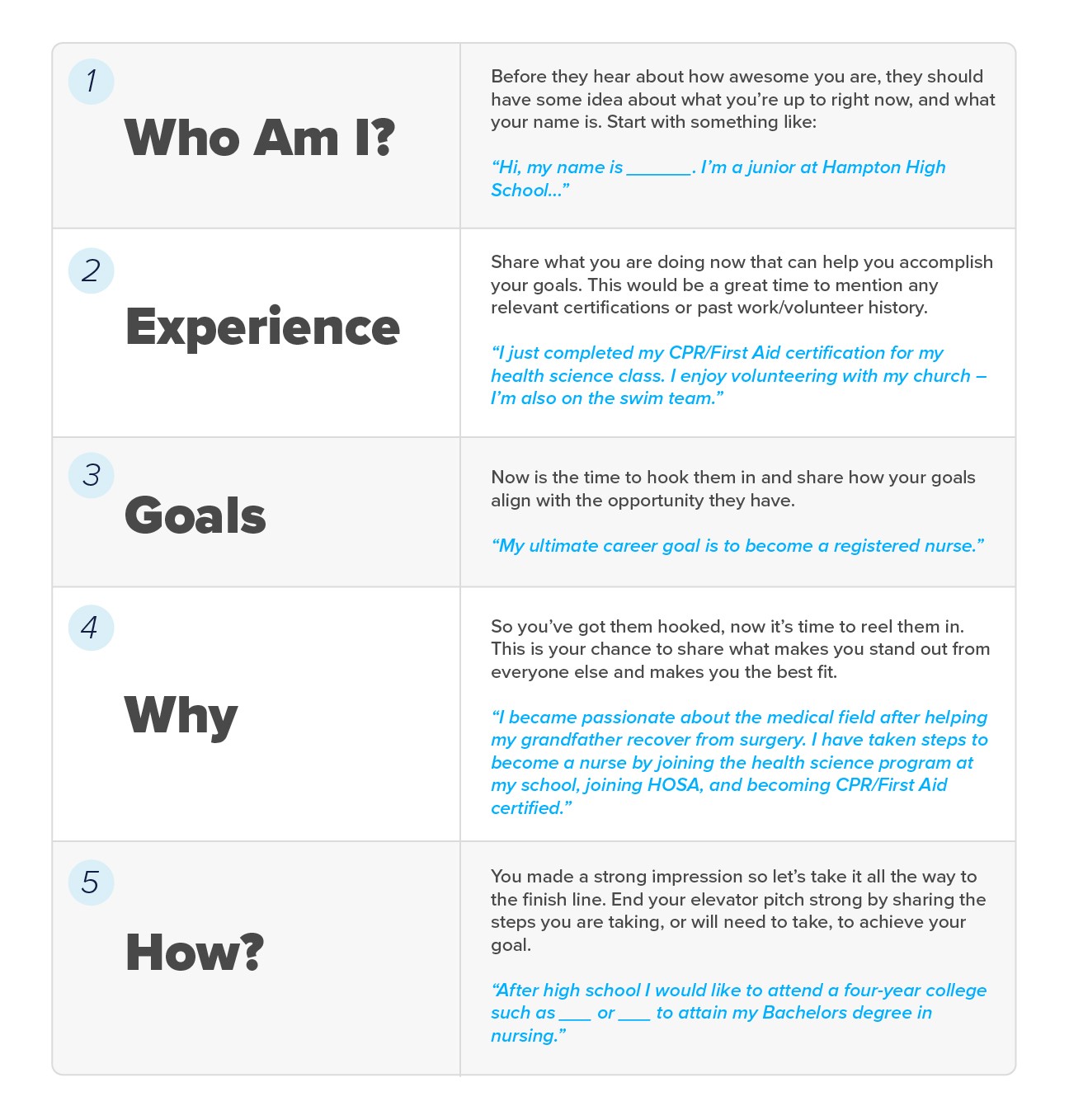
Get Started
It’s never a bad idea to start practicing your elevator pitches and have a couple up your sleeve. The perfect opportunity and eager recruiter could be just around the corner. In the meantime, upload your recorded elevator pitch video to your Tallo profile. Colleges and companies can click to view it when visiting your profile to get a sense of who you are and help connect you with the perfect opportunity.

RELATED POSTS
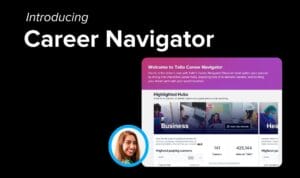
Charting Your Career Course: Tallo’s Career Navigator is Your New North Star

Daniel’s Tallo Tale: From Curious User to Rockstar Employee
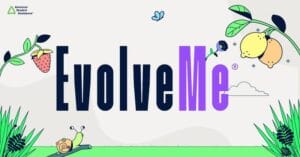
Shaping Tomorrow: Tallo Partners with ASA for Youth Career Readiness
Start charting your path today..
Connect with real educational and career-related opportunities.
8 Elevator Pitch Examples for Students

At some point in their lives, every student should care about having a successful elevator pitch they can pull up with great ease. That’s why we’ve picked out a set of the best elevator pitch examples for students. We’re hoping these will help you deliver impressive elevator pitches to further your career when needed.
What’s an elevator pitch for students?
The name given to elevator pitches refers to the pitch’s duration, which needs to be quicker than an elevator ride. A well-delivered pitch of this kind should, therefore, be no longer than 30 seconds.
Whether in high school or college, great elevator pitch examples for students need to be a quick overview of their educational, but moreover professional successes. It is a way of presenting themselves quite clearly and concisely and it should include mention of the person’s goals and set of skills.

How to Write an Elevator Pitch
Writing an effective elevator pitch involves several steps:
- Identify Your Goal : Know exactly what you want to achieve with your pitch. Are you looking to get a job, secure an internship, or simply make a connection?
- Explain What You Do : Clearly and concisely describe what you do or what your product does.
- Highlight Unique Value : Mention what sets you or your product apart from the competition.
- Engage with a Question or Call to Action : End with a question or a call to action to encourage further conversation.
Related read: Best pitch deck examples
Elevator Pitch Template
Here’s a simple template you can follow to craft your elevator pitch:
- Introduction : Who are you?
- Value Proposition : What do you do, and what makes it unique?
- Evidence or Example : Provide a brief example or evidence of your success.
- Engagement : End with a question or a call to action.
Download a free template here: Elevator Pitch Template
Elevator pitch examples for students
Example 1: slack.
"Hi, I'm [Your Name], and I'm here to introduce Slack, a new and revolutionary business messaging app. Slack replaces traditional email, making team collaboration more efficient and enjoyable by integrating all your communications in one place. Whether you’re a small startup or a large corporation, Slack’s channels, direct messages, and integrations with other tools like Google Drive and Trello streamline your workflow and improve productivity. With our platform, teams see an average 32% increase in productivity. Would you like to learn how Slack can transform your team’s communication?"
Example 2: Snapchat
"Hello, I'm [Your Name], and I'd like to talk to you about Snapchat, the multimedia messaging app that has transformed how we share moments. Snapchat’s unique approach with ephemeral content – photos and videos that disappear after being viewed – encourages spontaneous and authentic communication. Our innovative features like Stories, AR lenses, and Discover content keep users engaged and coming back for more. With over 280 million daily active users, Snapchat is not just a social app but a powerful platform for advertisers and influencers. Can we discuss how Snapchat can enhance your brand's engagement with younger audiences?"
Example 3: TikTok
"Hi, I'm [Your Name], and I'm excited to tell you about TikTok, the leading platform for short-form mobile video. TikTok allows users to create and share 15-second videos on any topic, enhanced by an extensive library of music, filters, and effects. Our algorithm curates content uniquely tailored to each user's interests, driving high engagement and viral trends. With over a billion active users worldwide, TikTok offers unparalleled reach and creativity for brands and creators. Let’s explore how TikTok can help you tap into the pulse of digital culture and engage with a global audience."
Example 4: Slidebean
"Hello, I'm [Your Name], and I’d like to introduce you to Slidebean, the ultimate pitch deck creation platform. Slidebean simplifies the process of creating professional presentations by offering AI-powered design and content suggestions. Our platform has helped thousands of startups create compelling pitch decks that have raised over $250 million in funding. With templates inspired by successful decks from companies like Airbnb and Uber, Slidebean ensures your presentation stands out. Would you like to see how Slidebean can help you craft the perfect pitch deck and secure your next investment?"
Example 5: Google
"Hi, I'm [Your Name], and I'm here to talk about Google, the world's most powerful search engine. Google organizes the world’s information and makes it universally accessible and useful. Our innovative products like Google Search, Google Maps, and Google Drive enhance everyday life and productivity for billions of users globally. Google’s search algorithms and AI technologies ensure accurate and relevant search results, setting us apart from the competition. Could we discuss how Google’s suite of products can enhance your business operations and drive growth?"
Example 6: DuckDuckGo
"Hello, I'm [Your Name], and I’m here to present DuckDuckGo, the search engine that prioritizes user privacy. Unlike other search engines, DuckDuckGo doesn’t track your searches or store your personal information, providing a secure and private browsing experience. Our search results are powered by over 400 sources, including crowd-sourced sites like Wikipedia, ensuring high-quality and unbiased results. With increasing concerns about data privacy, DuckDuckGo offers a trusted alternative to traditional search engines. Can we discuss how DuckDuckGo can be the private search solution for your needs?"
Example 7: BeReal
"Hi, I'm [Your Name], and I’d like to introduce BeReal, the social media app promoting authenticity and real connections. BeReal encourages users to post spontaneous and unfiltered photos, capturing genuine moments from their daily lives. This approach contrasts with the curated and often unrealistic content seen on other platforms. With its unique notification system, BeReal prompts users once a day to share a photo in real-time, fostering a community of trust and transparency. Let’s talk about how BeReal can revolutionize the way you connect with your audience and promote real-life interactions."
Importance of an Elevator Pitch for Students
For students, an elevator pitch can open doors to numerous opportunities. Whether you’re seeking internships, jobs, or simply networking, a well-crafted pitch can leave a lasting impression. It demonstrates your ability to communicate clearly and effectively, showcases your confidence, and highlights your achievements.
Tips for Perfecting Your Elevator Pitch
- Practice Regularly : The more you practice your pitch, the more natural it will feel. Practice in front of a mirror, with friends, or record yourself to identify areas for improvement.
- Be Concise : Keep your pitch short and to the point. Avoid jargon and complex language.
- Show Enthusiasm : Your passion for what you’re discussing should be evident. Enthusiasm can be contagious and engaging.
- Tailor Your Pitch : Customize your pitch depending on who you are speaking to. Highlight aspects that would be most relevant to the listener.
- Get Feedback : Ask for feedback from peers, mentors, or professionals to refine your pitch.
How to Customize Your Pitch for Different Scenarios
While the examples above are tailored to specific companies, it’s crucial to adapt your pitch to different scenarios. Here’s how you can customize your elevator pitch for various contexts:
- Job Interviews : Focus on how your skills and experiences align with the job you’re applying for. Mention specific accomplishments that demonstrate your qualifications.
- Networking Events : Highlight your unique value proposition and what you’re looking to achieve through networking. Be clear about the type of connections or opportunities you’re seeking.
- Startup Pitches : Emphasize your product’s unique features and the problem it solves. Include metrics that showcase your startup’s growth and potential.
- Academic Presentations : Concentrate on your research or project and its implications. Explain why your work is significant and what impact it could have.
Common Mistakes to Avoid
- Being Too Vague : Be specific about what you do and what you offer. Avoid general statements.
- Overloading with Information : Don’t try to include too much information. Stick to the most important points.
- Lack of Practice : A pitch that isn’t well-practiced can come off as unprepared and unprofessional.
- Ignoring Body Language : Your non-verbal cues are just as important as what you say. Maintain eye contact and use confident body language.
Whatever you do, be brief and honest
As you can probably tell, there are many different ways to word elevator pitches. And there are tons more responses possible from your contacted parties. Work hard at being honest about your current situation. And disclose your background and experience to make the best of your pitch.
Our best piece of advice is for you to keep this short and never underestimate the power of a 30-second elevator pitch. On the other hand, practice until you feel you’ve nailed it.
If you need a presentation to support your pitch, make sure you browse through our template section, so you can download the one you need for free.
Access our templates
Related video.
Upcoming events
From pitch deck to funding: a crash course, financial modeling bootcamp, popular articles.
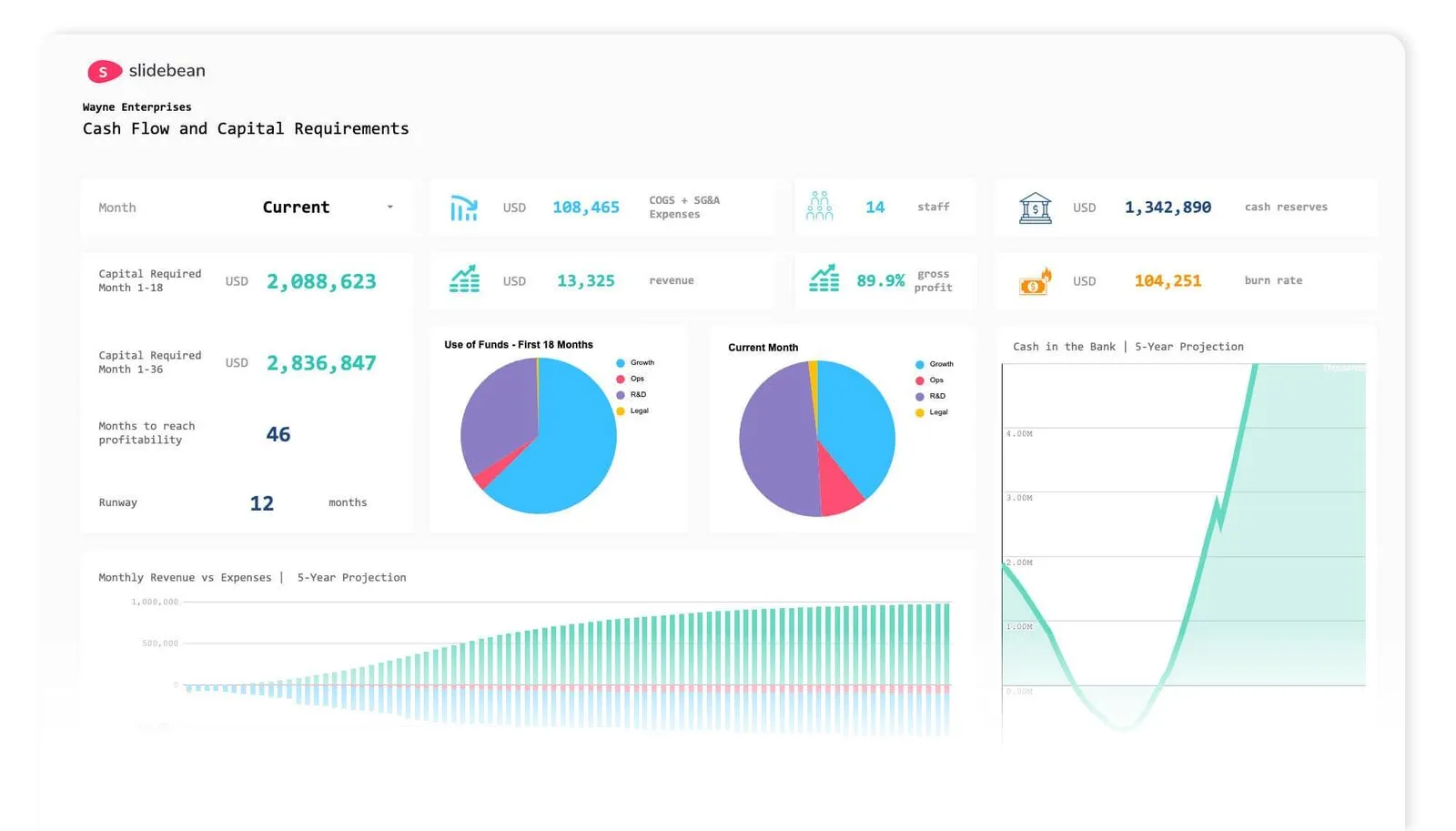
The Startup Financial Model Template by Slidebean

Financial Modeling Explained: What is Driver-Based Planning?

Let’s move your company to the next stage 🚀
Ai pitch deck software, pitch deck services.

Financial Model Consulting for Startups 🚀

Raise money with our pitch deck writing and design service 🚀

The all-in-one pitch deck software 🚀

We're going to dig into what investors are looking for, how to stand out from the crowd, and lessons learned when preparing a startup demo day pitch deck.
.webp)
A co-founder is usually a very vital piece of a puzzle to get a startup off the ground.

This is a functional model you can use to create your own formulas and project your potential business growth. Instructions on how to use it are on the front page.

Book a call with our sales team
In a hurry? Give us a call at
Elevator Speech Lesson

- Word Document File
Description
Questions & answers.
- We're hiring
- Help & FAQ
- Privacy policy
- Student privacy
- Terms of service
- Tell us what you think
You are using an outdated browser. Please upgrade your browser or activate Google Chrome Frame to improve your experience.
How to Deliver an Elevator Pitch in English
At its simplest, an elevator pitch is a short and effective sales pitch . The ability to make one is crucial for advancing your career.
For more career opportunities, learn how to be brief and impactful with this guide on delivering an elevator pitch in English.
What Exactly Is an Elevator Pitch?
The essentials of an elevator pitch, time duration, the 3 basic components of an elevator pitch, final checklist: who, what, why, when and how, body language and appearance, how to deliver the perfect elevator pitch in business english, 1. begin with a hook, 2. decide the objective of the pitch, 3. explain what you’ll do and why it matters, 4. focus on providing something no one else can, 5. anticipate questions, 6. end with a call to action, and one more thing....
Download: This blog post is available as a convenient and portable PDF that you can take anywhere. Click here to get a copy. (Download)
An elevator pitch doesn’t always take place in an elevator. It can happen anywhere—at a bar, at a cafe, on the streets, at a networking event, at a festival, on the phone…
During an elevator pitch, you introduce yourself to a prospective (possible) client, investor or industry person .
You also let that person know what you’re capable of and why it might help them to work with you in some way .
The right elevator pitch will make you visible and memorable, lead you to the right contacts and give your job or business a tremendous boost.
But, of course, coming up with the right words can be really difficult. How do you summarize all your achievements, credentials, skill set and future plans into a few sentences? How do you persuade a stranger to believe in you and what you do? How do you create that right first impression to ensure that there’s at least one follow-up meeting?
Read on, as I guide you through all the steps in detail.
Before we begin, let’s look at the different points that make up an elevator pitch . An elevator pitch is a special form of sales pitch designed to be used in specific circumstances for a specific goal. So here are some important points to remember.
Ideally, your elevator pitch should be short enough to take place during an elevator ride, which is roughly 30-60 seconds . You want to make an impression as quickly as possible, and you don’t want to bore the person, who is likely to be busy and preoccupied with several things.
Of course, if it’s a networking event or if you sense that the person has some time, you can stretch to 3-5 minutes , but you have to use your judgment. If the person is in a hurry, keep it brief. If the person is really interested and even asks questions, you know you can go on for a little longer.
Your pitch must contain these three things:
- a USP (Unique Selling Point)
- a clear goal
- a call to action (an instruction/suggestion for what the person you’re pitching should do next)
Even if you don’t have a pitch planned out ahead of time, you can make one up as long as it contains these three points. It should highlight what’s so unique about you and your business, what exactly you want to or can accomplish and how exactly the listener can help or be involved.
While the three components above will help you put together a pitch quickly, you’ll also want to make sure it ultimately answers these questions:
- Who are you?
- What do you do? (Or what can you do?)
- Why are you the best person for the job?
- When and how can you proceed?
Make sure that you’re making eye contact, your shoulders aren’t too stiff and your speech is clear and polite. Also, make sure that your clothes are neat and clean before you approach someone for a pitch.
Try to show that you genuinely believe in whatever you’re saying. Be flexible and open to further conversation and suggestions—remaining diplomatic is key.
You can get more guidance on how to craft an elevator pitch from “The Elevator Pitch” on FluentU .
FluentU takes authentic videos—like music videos, movie trailers, news and inspiring talks—and turns them into personalized language learning lessons.
You can try FluentU for free for 2 weeks. Check out the website or download the iOS app or Android app.
P.S. Click here to take advantage of our current sale! (Expires at the end of this month.)

Try FluentU for FREE!
Right, so first I’m going to ask you to imagine Person A . Let’s give him a name: Arjun . He graduated from college with an MBA, worked for a few years for some firms and now he has his own start-up. It’s a digital marketing agency and consultancy firm that handles everything from SEO to website design and promotions. He works with a team of PR officers, graphic designers, copywriters, SEO experts and coders.
Now, Arjun wants to give his business a boost and attract some high-profile clients. But how will he do that? Which skills and qualities should he try to capitalize on?
Let’s say Arjun bumps into Person B at a networking event. B’s name is Alex and he’s the CEO of an indie games company that has some great titles but not much visibility. Arjun can easily help him with that, but why would Alex trust Arjun of all people?
There are many ways Arjun can make an impression. He can focus on his educational background or his different skills or some of his professional achievements.
No matter what he brings up first, he wants to be sure to catch Alex’s interest.
So let’s say he starts with something direct like this:
“Hey, I’m Arjun and my start-up specializes in digital marketing solutions. I help get people’s names and businesses on the first page of Google .”
The last phrase says exactly what Arjun does and is sure to get Alex interested.
Arjun has guessed right that Alex’s business needs more traffic, and once he has his attention, he can expand upon other matters. His objective is to get Alex to be interested in the marketing services he has to offer . The rest of the pitch will be based on that goal.
Arjun has, of course, made a big claim. How exactly will he convince Alex that he’s the best person for the job?
Now that he has Alex’s attention, he can add:
“I’ve been following your company lately and I absolutely loved the titles that you brought out last year. My team can ensure that those games reach a greater audience within a few weeks. We can help with rebranding the website, fine-tune the SEO and create compelling social media profiles to attract more gamers and give a sales boost.”
Depending on Alex’s response, he can also add:
“After I got my MBA from Harvard, I spent three years working with an advertising firm where we helped different companies and start-ups rebrand themselves and grow their audience . My start-up, which is only a year old, has already been recognized and applauded by leading business websites.”
So far so good. Arjun has told Alex how he can help him, and why he’s particularly suited to help him. But why should Alex hire him specifically when there are so many other marketing firms out there?
Here, Arjun can deliver his USP:
“And the best part is, we offer a one-week trial pack for all our clients. So for free, you get to see all the amazing things we can do to boost your business. And if you like it, we can move on from there, and if you don’t, you still get to keep the things we did, all for free.”
Now, Alex is intrigued. He really needs that business boost and Arjun is offering something different. Instead of asking Alex to trust him, he’s trusting Alex to take him at his word and sign up for something, with no hidden costs attached, just to see if it works. Alex now has no reason to refuse.
Chances are, Alex might ask a few questions. He might want to know how the free trial works and what the benefits covered in the seven days are.
Arjun can answer those questions as they come up, but he’s played his cards right with what he’s said so far. He hasn’t given too much information, but just enough to ensure that Alex remains interested in the conversation.
To end his pitch, Arjun hands Alex his business card and says:
“Here are my contact details. If you need anything or you know anyone else who does, even just a consultation, let me know and I’d be happy to help out in any way possible.”
Now Alex can thank him and promise to be in touch, or he may be interested enough to ask more about the start-up and the services it offers. Maybe they’ll even negotiate a deal on the spot. The phrase “or you know anyone else who does” is important because it tells Alex that Arjun is on the lookout for similar clients and Alex should feel free to recommend him to anyone he knows.
Arjun’s pitch tells us who he is and what he does. It tells us why he’s the best person to help out Alex and how he can do it. Finally, giving Alex the business card shows Arjun is committed and is ready to take on a new client, pronto ( right away ). In short, his pitch is perfect and complete.
Based on these points, you can try crafting your own pitch. If you’re still feeling uncertain, you can find other examples here .
Chances are that you won’t get it right on your first try. You might mess up or the person might not understand. Or worse, the person might just walk away without a response. But don’t let that get you down.
Practice your Elevator Pitch repeatedly in front of the mirror until you’re confident.
Try it on your friends or coworkers you trust. Ask for their feedback.
After the first few attempts you’ll get the hang of it, and then you’ll be on a roll.
If you like learning English through movies and online media, you should also check out FluentU. FluentU lets you learn English from popular talk shows, catchy music videos and funny commercials , as you can see here:

If you want to watch it, the FluentU app has probably got it.
The FluentU app and website makes it really easy to watch English videos. There are captions that are interactive. That means you can tap on any word to see an image, definition, and useful examples.

FluentU lets you learn engaging content with world famous celebrities.
For example, when you tap on the word "searching," you see this:

FluentU lets you tap to look up any word.
Learn all the vocabulary in any video with quizzes. Swipe left or right to see more examples for the word you’re learning.

FluentU helps you learn fast with useful questions and multiple examples. Learn more.
The best part? FluentU remembers the vocabulary that you’re learning. It gives you extra practice with difficult words—and reminds you when it’s time to review what you’ve learned. You have a truly personalized experience.
Start using the FluentU website on your computer or tablet or, better yet, download the FluentU app from the iTunes or Google Play store. Click here to take advantage of our current sale! (Expires at the end of this month.)
Related posts:
Enter your e-mail address to get your free pdf.
We hate SPAM and promise to keep your email address safe


COMMENTS
These are meant to be short speeches, no longer than a minute — it shouldn't take longer than a ride in an elevator. • OUTLINE: Students complete the Elevator Pitch Outline Handout.
Day One - Through the Elevator Speech lesson, students will research and prepare for three potential elevator speeches. Objectives: Evaluate credible sources of information and data to support each elevator speech topic Create 1-2 minute elevator speeches for each topic
Elevator Pitch Assignment and Class Activity: Requires: 45-60 minutes of class time and 60 minutes of time prior to class Prior to Class Using the elevator pitch resource sheet (attached), students should prepare a 1 minute written elevator speech.
An elevator pitch is a brief, persuasive speech that is a way of introducing oneself and sparking interest in one's creative ideas. The name comes from the amount of time it should take to deliver. If you're an educator of high school or college-aged students, you can consider using this technique in the classroom! Whether …
The Elevator Pitch ESL Lesson Plan is designed to help students develop the essential language skills needed to deliver a concise and persuasive speech about themselves or a specific topic within a short time frame, similar to an elevator ride. This lesson plan is crucial as it equips students with the ability to communicate effectively in high ...
Part 1: Who Are You? Your elevator pitch starts with your name, of course, but also consider throwing in a "hook" that gives the person you're speaking with an opening to ask you questions. Here are some examples: "I'm [your name], a recent graduate of [university] with a degree in [your degree].".
Explain that in today's lesson, students are going to continue to develop their own personal brands by working on their own elevator pitches. Introduce the concept of "Elevator Pitch" to students.
Elevator Speech This strategy encourages students to prepare and deliver short persuasive speeches using a version of the "elevator speech" concept. Students hone their public speaking skills as they persuade their peers to consider the validity of a topic.
Business English lesson to help students craft an elevator pitch. Useful for students who are job seekers, entrepreneurs, salespeople, and freelancers.
This lesson features a video from a movie that shows two men trying to give a sales pitch at a car company. Students will learn and practice discourse markers and vocabulary relating to this topic. The lesson includes plenty of engaging discussion activities and worksheets that have been developed for adult and teenage learners.
He wrote over 300 free speech topic ideas and how-to guides for any kind of public speaking and speech writing assignments at My Speech Class. Capturing your background, skills, and objectives into a short and clever elevator speech can be difficult.
What is an elevator pitch for students? An elevator pitch for students (AKA elevator speech) is used by individuals during career fairs, networking events, or job interviews.
Learn how to create a memorable elevator speech that grabs attention and leaves a lasting impression. Discover the key elements and tips for crafting your pitch.
An elevator pitch is a concise description of who you are, your experiences, and your goals. This is a great time to ask the class and discuss: Why do you think they are called elevator pitches? Elevator pitches are generally short speeches that shouldn't take longer than an elevator ride.
Kat Robb wins this month's Lesson Share competition with a lesson about how to deliver an effective elevator pitch.
How to Create the Perfect Elevator Pitch with Examples Imagine this: You step onto an elevator and somehow find yourself standing next to a recruiter from your dream company or college. You have about sixty seconds to make the moment count - what do you do, what do you say?
We've picked out a set of the best elevator pitch examples for students. We hope these will help you deliver impressive elevator pitches to further your career.
This lesson is intended to help your students understand the purpose of and to create an elevator speech they can use for job interviews, internship opportunities or during college visits. In this handout there are links to two YouTube videos with comprehension questions for each that describe what an elevator speech is, explain its purpose ...
Want to create an awesome Elevator Pitch? Here's the ultimate guide to the Elevator Pitch that every business-minded English learner needs.
BACKGROUND Every 4-H Camp Ambassador needs an elevator speech - a short and direct answer to why anyone should attend or send their children to 4-H camp. An elevator speech usually lasts only 60 seconds (or about 200 words), which is about the time it takes to ride up eight floors in an elevator.